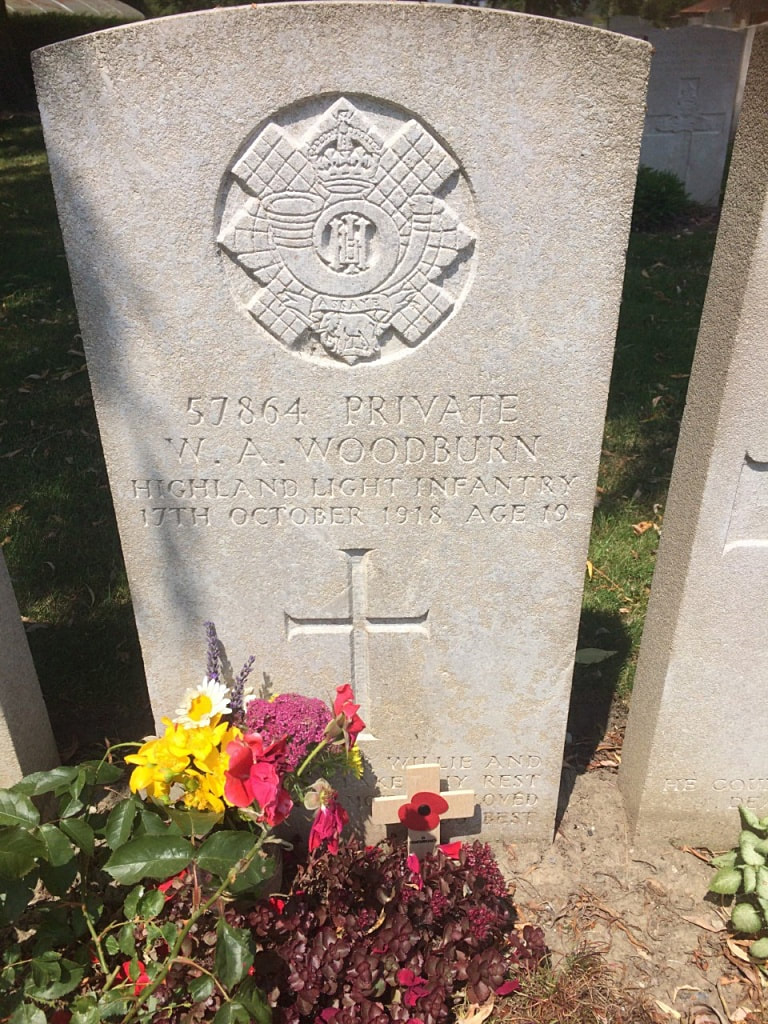Lijssenthoek Military Cemetery
Roll of Honour
O - Z
Dedication
4952 Private George Weddell, 8th Bn. The Queen's (Royal West Surrey Regiment), 08/03/1916, aged 36.
The inscription on his headstone, placed by his wife, reads: "A Loving father & Husband both true and kind. No friend on earth like thee we find."
Remembered by his granddaughter Veronica Joy Graham (nee Weddell)
4952 Private George Weddell, 8th Bn. The Queen's (Royal West Surrey Regiment), 08/03/1916, aged 36.
The inscription on his headstone, placed by his wife, reads: "A Loving father & Husband both true and kind. No friend on earth like thee we find."
Remembered by his granddaughter Veronica Joy Graham (nee Weddell)
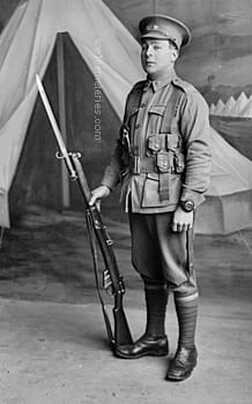
2691 Lance Corporal
James Robert O'Day
2nd Australian Pioneers
29th September 1917
Plot XXV. B. 15A.
from South Gippsland, Vic. Pte O'Day enlisted on 1 July 1915 and embarked aboard HMAT Karroo in Melbourne as an Acting Corporal, on 18 September 1916. Lance Corporal O'Day died of wounds received on 29 September 1917 at Ypres, Belgium.
James Robert O'Day
2nd Australian Pioneers
29th September 1917
Plot XXV. B. 15A.
from South Gippsland, Vic. Pte O'Day enlisted on 1 July 1915 and embarked aboard HMAT Karroo in Melbourne as an Acting Corporal, on 18 September 1916. Lance Corporal O'Day died of wounds received on 29 September 1917 at Ypres, Belgium.

2272 Sergeant
Douglas McMillan Paton
26th Bn. Australian Infantry, A. I. F.
29th October 1917, aged 27.
Plot XXI. BB. 12.
Son of Alexander and Agnes Paton; husband of Juliet P. Paton, of Bellerive, Hobart, Tasmania. Native of Hobart, Tasmania. Died at No. 3 (Canadian) Casualty Clearing Station from wounds to the left shoulder, forehead and jaw.
4893 Sergeant Sergison later recalled:
"Zonnebeke, up on the hill, he was hit by a shell, shoulder and head. taken to 3rd Canadian Dressing Station, Poperinghe, this was the 27th October. I went down on the same ambulance, the doctor, seeing the same colours on us told me not much hope, shoulder blown away and wounded in the head. We were in the same battalion and I knew him well."
Picture courtesy of great-great niece, Tracy Thornely
Douglas McMillan Paton
26th Bn. Australian Infantry, A. I. F.
29th October 1917, aged 27.
Plot XXI. BB. 12.
Son of Alexander and Agnes Paton; husband of Juliet P. Paton, of Bellerive, Hobart, Tasmania. Native of Hobart, Tasmania. Died at No. 3 (Canadian) Casualty Clearing Station from wounds to the left shoulder, forehead and jaw.
4893 Sergeant Sergison later recalled:
"Zonnebeke, up on the hill, he was hit by a shell, shoulder and head. taken to 3rd Canadian Dressing Station, Poperinghe, this was the 27th October. I went down on the same ambulance, the doctor, seeing the same colours on us told me not much hope, shoulder blown away and wounded in the head. We were in the same battalion and I knew him well."
Picture courtesy of great-great niece, Tracy Thornely
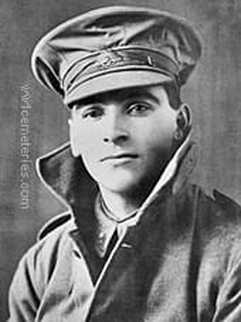
5652 Lance Corporal
Arthur Frederick James Payne
18th Bn. Australian Infantry, A. I. F.
9th October 1917, aged 22.
Plot XXI. B. 13.
Son of William Pearman and Margaret Payne of Coldstream St., Elmana, Clarence River, New South Wales.
LCpl Payne had spent three years in cadets and two years in the 12th Infantry (CMF) before enlisting in March 1916, and left Australia in September 1916 with the 15th Reinforcement group for service on the Western Front. He sustained wounds in the face and neck during the 18th Battalion's attack on Poelcappelle on Passchendaele Ridge on 8 October 1917, and died the following day at the 10th Casualty Clearing Station at Lijssenthoek.
Arthur Frederick James Payne
18th Bn. Australian Infantry, A. I. F.
9th October 1917, aged 22.
Plot XXI. B. 13.
Son of William Pearman and Margaret Payne of Coldstream St., Elmana, Clarence River, New South Wales.
LCpl Payne had spent three years in cadets and two years in the 12th Infantry (CMF) before enlisting in March 1916, and left Australia in September 1916 with the 15th Reinforcement group for service on the Western Front. He sustained wounds in the face and neck during the 18th Battalion's attack on Poelcappelle on Passchendaele Ridge on 8 October 1917, and died the following day at the 10th Casualty Clearing Station at Lijssenthoek.
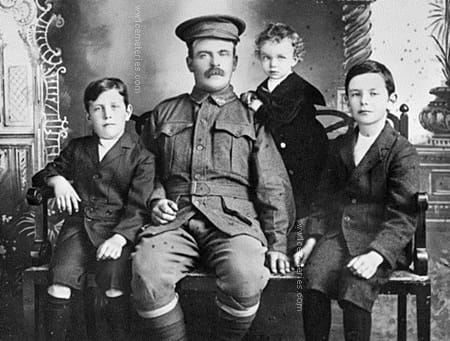
4551 Lance Corporal
Thomas William Pearson
10th Bn. Australian Infantry, A. I. F.
22nd September 1916, aged 36.
Plot X. B. 9.
Son of Job and Margaret Pearson, husband of Julia A. Pearson, of Sandilands, Yorke Peninsula, South Australia.
4551 Private (Pte) Thomas William Pearson, 10th Battalion, of Kadina SA, and his three sons. A farmer prior to enlistment Pte Pearson embarked on HMAT Miltiades (A28) on 7 February 1916. He served in Palestine and the Western Front and was promoted to Lance Corporal (L Cpl). On 22 September 1916, L Cpl Pearson, aged 36, died of wounds received in action in Belgium. On the right is Rex Whiting Pearson, later member for Flinders from 1941 until 1951, and a senator until his death in 1961. The youngest son is Howard Pearson who became a Methodist minister and missionary in New Britain. Following the Japanese invasion of January 1942, he was taken prisoner and held at Rabaul. On 22 June 1942 Howard Pearson was one of an estimated 209 civilians and 845 POWs who embarked from Rabaul aboard the Japanese transport ship MV Montevideo Maru. The POWs were members of 2/22 Battalion, No. 1 Independent Company, and other units of Lark Force. Civilians included officials of the New Guinea Administration and missionaries. The ship sailed unescorted for Hainan Island. On 1 July 1942 all the prisoners died when the Montevideo Maru was torpedoed by a US Navy submarine, USS Sturgeon, off the coast of Luzon Island in the Philippines. On the left is Glen Gardner Pearson. He took over his elder brother's seat in Parliament in 1951 and was knighted in 1970.
Thomas William Pearson
10th Bn. Australian Infantry, A. I. F.
22nd September 1916, aged 36.
Plot X. B. 9.
Son of Job and Margaret Pearson, husband of Julia A. Pearson, of Sandilands, Yorke Peninsula, South Australia.
4551 Private (Pte) Thomas William Pearson, 10th Battalion, of Kadina SA, and his three sons. A farmer prior to enlistment Pte Pearson embarked on HMAT Miltiades (A28) on 7 February 1916. He served in Palestine and the Western Front and was promoted to Lance Corporal (L Cpl). On 22 September 1916, L Cpl Pearson, aged 36, died of wounds received in action in Belgium. On the right is Rex Whiting Pearson, later member for Flinders from 1941 until 1951, and a senator until his death in 1961. The youngest son is Howard Pearson who became a Methodist minister and missionary in New Britain. Following the Japanese invasion of January 1942, he was taken prisoner and held at Rabaul. On 22 June 1942 Howard Pearson was one of an estimated 209 civilians and 845 POWs who embarked from Rabaul aboard the Japanese transport ship MV Montevideo Maru. The POWs were members of 2/22 Battalion, No. 1 Independent Company, and other units of Lark Force. Civilians included officials of the New Guinea Administration and missionaries. The ship sailed unescorted for Hainan Island. On 1 July 1942 all the prisoners died when the Montevideo Maru was torpedoed by a US Navy submarine, USS Sturgeon, off the coast of Luzon Island in the Philippines. On the left is Glen Gardner Pearson. He took over his elder brother's seat in Parliament in 1951 and was knighted in 1970.
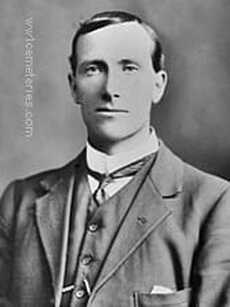
2285 Lance Corporal
Spencer Pedder, D. C. M.
6th Bn. Australian Infantry, A. I. F.
20th September 1917, aged 36.
Plot XXIII. B. 4A.
Son of Frederick and Sarah Blanche Pedder, of Collins St., Hobart, Tasmania. Native of Bellerive, Hobart, Tasmania.
A labourer from Albert Park, Vic prior to enlistment, embarked with the rank of Private with the 2nd Reinforcements from Melbourne on HMAT Clan McGillivray on 2 February 1915. Promoted to Lance Corporal at Gallipoli, he was later awarded the Distinguished Conduct Medal in France "for conspicuous gallantry during operations when attending and removing the wounded. He organised stretcher bearers to replace casualties, cheering them on when they showed signs of exhaustion and setting a fine example." On 20 September 1917, aged 36, he died of wounds received in action.
Spencer Pedder, D. C. M.
6th Bn. Australian Infantry, A. I. F.
20th September 1917, aged 36.
Plot XXIII. B. 4A.
Son of Frederick and Sarah Blanche Pedder, of Collins St., Hobart, Tasmania. Native of Bellerive, Hobart, Tasmania.
A labourer from Albert Park, Vic prior to enlistment, embarked with the rank of Private with the 2nd Reinforcements from Melbourne on HMAT Clan McGillivray on 2 February 1915. Promoted to Lance Corporal at Gallipoli, he was later awarded the Distinguished Conduct Medal in France "for conspicuous gallantry during operations when attending and removing the wounded. He organised stretcher bearers to replace casualties, cheering them on when they showed signs of exhaustion and setting a fine example." On 20 September 1917, aged 36, he died of wounds received in action.
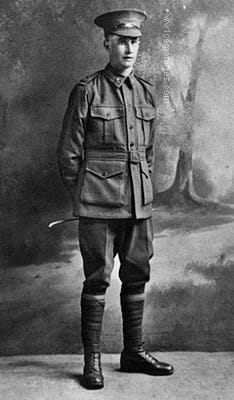
3204 Private
Albert George Pegram
55th Bn. Australian Infantry, A. I. F.
28th September 1917, aged 19.
Plot XXV. AA. 10A.
Son of John and Catherine Pegram, of Bredbo, New South Wales.
A labourer from Bredbo, NSW prior to enlistment, Pte Pegram embarked with the 8th Reinforcements from Sydney on HMAT Suevic on 11 November 1916. On 28 September 1917, aged 19, he died of wounds received in action at Polygon Wood.
Albert George Pegram
55th Bn. Australian Infantry, A. I. F.
28th September 1917, aged 19.
Plot XXV. AA. 10A.
Son of John and Catherine Pegram, of Bredbo, New South Wales.
A labourer from Bredbo, NSW prior to enlistment, Pte Pegram embarked with the 8th Reinforcements from Sydney on HMAT Suevic on 11 November 1916. On 28 September 1917, aged 19, he died of wounds received in action at Polygon Wood.
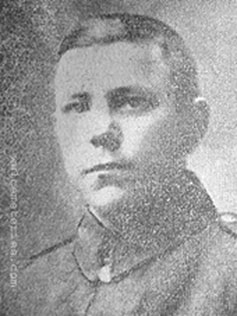
19614 Private
William Perry
"C" Coy. 1st Bn. East Lancashire Regiment
10th August 1916, aged 19.
Plot VIII. D. 33A.
Son of Henry and Mary Jane Perry, of 17, St. John's Rd., Burnley.
Army Chaplain A. B. Brooker (No.10 Casualty Clearing Station) wrote to his parents;
"I am very sorry indeed to tell you that your son, Pte. W. Perry died in hospital here at 6pm on the 10th of this month. He was admitted the day before suffering from the effects of gas poisoning. He was conscious for only a short time and was not suffering much, but was very weak and exhausted and unable to speak. I was with him and prayed with him and did all I could to comfort him. I told him I would write to you and he sent you his dearest love- That was his only message, very soon he became unconscious, and remained so till the end, next day, when in spite of all the efforts of the doctors and nurses he passed quietly away."
William Perry
"C" Coy. 1st Bn. East Lancashire Regiment
10th August 1916, aged 19.
Plot VIII. D. 33A.
Son of Henry and Mary Jane Perry, of 17, St. John's Rd., Burnley.
Army Chaplain A. B. Brooker (No.10 Casualty Clearing Station) wrote to his parents;
"I am very sorry indeed to tell you that your son, Pte. W. Perry died in hospital here at 6pm on the 10th of this month. He was admitted the day before suffering from the effects of gas poisoning. He was conscious for only a short time and was not suffering much, but was very weak and exhausted and unable to speak. I was with him and prayed with him and did all I could to comfort him. I told him I would write to you and he sent you his dearest love- That was his only message, very soon he became unconscious, and remained so till the end, next day, when in spite of all the efforts of the doctors and nurses he passed quietly away."
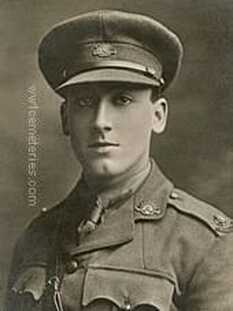
Second Lieutenant
Theodor Milton Pflaum
25th Coy. Australian Machine Gun Corps
24th September 1917, aged 22.
Plot XXV. F. 2.
Son of Theodor and Mary Jane Pflaum, of Birdwood, South Australia.
A clerk from Blumberg, South Australia, prior to enlistment in the 32nd Battalion as 327 Private (Pte) Blumberg, he embarked with C Company from Adelaide on 18 November 1915 aboard HMAT Geelong (A2) for Suez. He was transferred to the 8th Machine Gun Company on 30 May 1916 and promoted to Corporal (Cpl) the next day. His unit relocated the Western Front, France, during June 1916. Cpl Pflaum was promoted to Sergeant on 1 September 1916. On 10 February 1917 he was transferred to the AIF Training Depot in England and promoted to Second Lieutenant. While in England he was transferred to the 25th Australian Machine Gun Company and then attached to the 3rd Training Battalion for bombing instruction and to the Revolver School where he qualified as Instructor. He embarked with his unit from Southampton on 7 September 1917 for France and then to Belgium. 2nd Lt Pflaum was wounded in action near Ypres, Belgium, on 24 September 1917 and died of these wounds later that day. He was aged 22 years. His brothers 1591 Captain Elliott Frederick Pflaum, 3rd Light Horse Regiment, returned to Australia on 6 May 1919 and 161 Private Raymond Holstein Pflaum, 32nd Battalion died whilst a Prisoner of War on 24 November 1916. He is buried at the Fromelles (Pheasant Wood) Military Cemetery. A third brother, Leonard Haddon Pflaum enlisted in late August 1918 but was discharged in December after the cessation of hostilities.
Theodor Milton Pflaum
25th Coy. Australian Machine Gun Corps
24th September 1917, aged 22.
Plot XXV. F. 2.
Son of Theodor and Mary Jane Pflaum, of Birdwood, South Australia.
A clerk from Blumberg, South Australia, prior to enlistment in the 32nd Battalion as 327 Private (Pte) Blumberg, he embarked with C Company from Adelaide on 18 November 1915 aboard HMAT Geelong (A2) for Suez. He was transferred to the 8th Machine Gun Company on 30 May 1916 and promoted to Corporal (Cpl) the next day. His unit relocated the Western Front, France, during June 1916. Cpl Pflaum was promoted to Sergeant on 1 September 1916. On 10 February 1917 he was transferred to the AIF Training Depot in England and promoted to Second Lieutenant. While in England he was transferred to the 25th Australian Machine Gun Company and then attached to the 3rd Training Battalion for bombing instruction and to the Revolver School where he qualified as Instructor. He embarked with his unit from Southampton on 7 September 1917 for France and then to Belgium. 2nd Lt Pflaum was wounded in action near Ypres, Belgium, on 24 September 1917 and died of these wounds later that day. He was aged 22 years. His brothers 1591 Captain Elliott Frederick Pflaum, 3rd Light Horse Regiment, returned to Australia on 6 May 1919 and 161 Private Raymond Holstein Pflaum, 32nd Battalion died whilst a Prisoner of War on 24 November 1916. He is buried at the Fromelles (Pheasant Wood) Military Cemetery. A third brother, Leonard Haddon Pflaum enlisted in late August 1918 but was discharged in December after the cessation of hostilities.
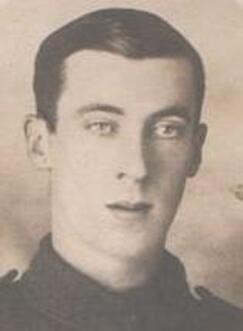
2340 Private
Ernest Pheasey
5th Bn. West Yorkshire Regiment (Prince of Wales's Own).
17th August 1915, aged 30.
Plot III. C. 15A
Picture courtesy of Tony Seymour
Ernest Pheasey
5th Bn. West Yorkshire Regiment (Prince of Wales's Own).
17th August 1915, aged 30.
Plot III. C. 15A
Picture courtesy of Tony Seymour

23177 Private
Henry William Phillips
1st Bn. Hampshire Regiment
10th August 1916, aged 35.
Plot VIII. D. 17A.
Son of William Henry and Sarah Jane Phillips. Born Portsmouth.
INSCRIPTION. WE MOURN FOR YOU DEAR BROTHER WITH HEARTS SINCERE WITH LOVING THOUGHTS.
Died No 3 Canadian Casualty Clearing Station August 1916 gunshot wounds to the chest aged 35.
Picture courtesy of Sarah Leslie (Great Great Niece)
Henry William Phillips
1st Bn. Hampshire Regiment
10th August 1916, aged 35.
Plot VIII. D. 17A.
Son of William Henry and Sarah Jane Phillips. Born Portsmouth.
INSCRIPTION. WE MOURN FOR YOU DEAR BROTHER WITH HEARTS SINCERE WITH LOVING THOUGHTS.
Died No 3 Canadian Casualty Clearing Station August 1916 gunshot wounds to the chest aged 35.
Picture courtesy of Sarah Leslie (Great Great Niece)
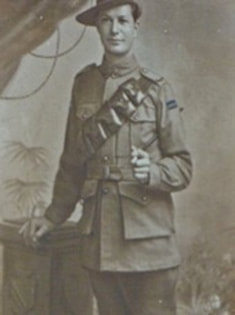
27836 Gunner
Robert Phillips
1st Bde. Australian Field Artillery
12th October 1917, aged 26.
Plot XX. J. 4A.
Son of Samuel and Carrie Catherine Phillips, of Drouin, Victoria, Australia. Native of Longwarry East, Victoria.
Picture courtesy of great niece, Joy Proffitt
Robert Phillips
1st Bde. Australian Field Artillery
12th October 1917, aged 26.
Plot XX. J. 4A.
Son of Samuel and Carrie Catherine Phillips, of Drouin, Victoria, Australia. Native of Longwarry East, Victoria.
Picture courtesy of great niece, Joy Proffitt
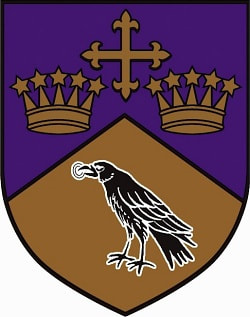
G/8124 Private
Joseph William Pope
"D" Company, 9th Bn. Royal Sussex Regiment
4th August 1917, aged 35.
Plot XVII. E. 19A.
Son of Katherine Mary Pope, of "Stanbridge," Albert Park Rd., Malvern Link, Worcs., and the late Joseph William Pte. Born Hall Court, Much Marcle, Herefordshire.
His headstone bears the inscription "He Did His Duty"
The information below supplied by 'The Ellesmerian Club', the alumni organisation for Ellesmere College where Joseph was a pupil.
Joseph William Pope
"D" Company, 9th Bn. Royal Sussex Regiment
4th August 1917, aged 35.
Plot XVII. E. 19A.
Son of Katherine Mary Pope, of "Stanbridge," Albert Park Rd., Malvern Link, Worcs., and the late Joseph William Pte. Born Hall Court, Much Marcle, Herefordshire.
His headstone bears the inscription "He Did His Duty"
The information below supplied by 'The Ellesmerian Club', the alumni organisation for Ellesmere College where Joseph was a pupil.
Joseph ‘Joe’ William Pope, the eldest of four children of Joseph William, a farmer, and his wife Katherine Mary was born on 5th February 1882 in Much Marcle, Herefordshire. He had a younger brother, William, two younger sisters, Eva and Isabel and the family lived at The Great House, Leigh, Worcester. Prior to his arrival at Ellesmere College in January 1895, Joe had been educated at The Corner House School, Worcester.
Forty new boys were admitted to the college on 29th January 1895 and Joe was allocated to the ‘Alfred’ dormitory which would be his ‘home from home’ for the next seven terms as it was for another young man, John White-Bell. He was to die on active service in September 1916. Joe would also have known John Cowling very well – he lost his life in May 1915, and Algernon ‘Algie’ Hartigan who fought in the Boer War as well as the Great War. He saw further service in the Second World War and died in 1941.
Very little is known of Joe’s time at the college. He was initially placed in Form Middle I under the instruction of Mr. F. H. Harward at a time when there were one hundred and eighty one pupils on the nominal roll and progressed upwards through the academic classes. There are no records of him participating in any extra-curricular activities or in any sports teams. His brother, William, entered Ellesmere the same term and remained for six years.
Joe left the college at the end of the Easter Term 1897, two months after his fifteenth birthday and it is almost certain that he returned home to work on the family farm, - that was his occupation as recorded in the 1901 Census. It would seem, however, that he soon has a change of career as The Ellesmerian (April 1903) published a letter from another Old Ellesmerian, G. D. Keyworth who was working for The Eastern Telegraph Company. He wrote that “Joe Pope, who was in the ‘Harold’ (dormitory), is now at the Carcavellos Station, ten miles out of Lisbon. He went abroad at Christmas. I had a long chat with him on the ear cable this evening. Here's his first remark :
" ani news frm elsmre."
He tells me that they started cricket there to-day, and bathing began in February. I suppose he will be sent on to Suez or Aden or somewhere thereabouts, in a couple of years”.
However, it seems that Joe’s career with the telegraph company did not last that long as the 1911 Census recorded him living in Shipley, Essex with his widowed mother and his sister, Eva. His return home may have been due to the death of his father in 1908. He was shown to be a poultry farmer on his own account.
Exactly where or when he enlisted in the armed forces after the outbreak of war is not known. The scant military records that have survived indicate he served as Private Pope, Service No: G/8124 with ‘D’ Company, the Royal Sussex Regiment. The ‘G’ prefix indicates he originally enlisted in one of the Home Counties battalions for General Service or in the Royal Fusiliers.
The Regimental War Diary for 1st August 1917 records that ‘D’ Company were in position at Canada Street tunnels. On 3rd August the battalion took over the front line held by the 17th Infantry Brigade and ‘D’ Company was in the front line, west of Het Pappotje. During this period the weather was extremely bad and consolidation and re-organising of the line was carried out under great difficulties.
Joe was wounded and admitted to No. 10 Casualty Clearing Station but he died on 4th August. Exactly how he was wounded or when is not known.
He was awarded the Victory Medal and the British War Medal and is buried in Lijssenthoek Military Cemetery.
Forty new boys were admitted to the college on 29th January 1895 and Joe was allocated to the ‘Alfred’ dormitory which would be his ‘home from home’ for the next seven terms as it was for another young man, John White-Bell. He was to die on active service in September 1916. Joe would also have known John Cowling very well – he lost his life in May 1915, and Algernon ‘Algie’ Hartigan who fought in the Boer War as well as the Great War. He saw further service in the Second World War and died in 1941.
Very little is known of Joe’s time at the college. He was initially placed in Form Middle I under the instruction of Mr. F. H. Harward at a time when there were one hundred and eighty one pupils on the nominal roll and progressed upwards through the academic classes. There are no records of him participating in any extra-curricular activities or in any sports teams. His brother, William, entered Ellesmere the same term and remained for six years.
Joe left the college at the end of the Easter Term 1897, two months after his fifteenth birthday and it is almost certain that he returned home to work on the family farm, - that was his occupation as recorded in the 1901 Census. It would seem, however, that he soon has a change of career as The Ellesmerian (April 1903) published a letter from another Old Ellesmerian, G. D. Keyworth who was working for The Eastern Telegraph Company. He wrote that “Joe Pope, who was in the ‘Harold’ (dormitory), is now at the Carcavellos Station, ten miles out of Lisbon. He went abroad at Christmas. I had a long chat with him on the ear cable this evening. Here's his first remark :
" ani news frm elsmre."
He tells me that they started cricket there to-day, and bathing began in February. I suppose he will be sent on to Suez or Aden or somewhere thereabouts, in a couple of years”.
However, it seems that Joe’s career with the telegraph company did not last that long as the 1911 Census recorded him living in Shipley, Essex with his widowed mother and his sister, Eva. His return home may have been due to the death of his father in 1908. He was shown to be a poultry farmer on his own account.
Exactly where or when he enlisted in the armed forces after the outbreak of war is not known. The scant military records that have survived indicate he served as Private Pope, Service No: G/8124 with ‘D’ Company, the Royal Sussex Regiment. The ‘G’ prefix indicates he originally enlisted in one of the Home Counties battalions for General Service or in the Royal Fusiliers.
The Regimental War Diary for 1st August 1917 records that ‘D’ Company were in position at Canada Street tunnels. On 3rd August the battalion took over the front line held by the 17th Infantry Brigade and ‘D’ Company was in the front line, west of Het Pappotje. During this period the weather was extremely bad and consolidation and re-organising of the line was carried out under great difficulties.
Joe was wounded and admitted to No. 10 Casualty Clearing Station but he died on 4th August. Exactly how he was wounded or when is not known.
He was awarded the Victory Medal and the British War Medal and is buried in Lijssenthoek Military Cemetery.
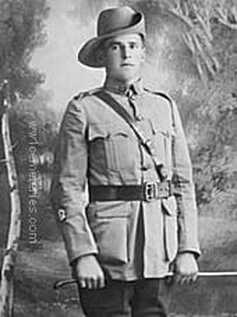
1807 Sergeant Major
Arnold Pringle
14th Bn. Australian Infantry, A. I. F.
16th October 1917
Plot XXI. E. 15.
An ironmonger from Glenferrie, Vic prior to enlistment, WO1 Pringle embarked with the rank of Corporal with the 4th Reinforcements from Melbourne on HMAT Shropshire on 20 March 1915. After being wounded at Gallipoli he was evacuated to Egypt and, after rejoining his unit, was promoted to Warrant Officer Class 1. On 16 October 1917, aged 23, he died of wounds received in action.
Arnold Pringle
14th Bn. Australian Infantry, A. I. F.
16th October 1917
Plot XXI. E. 15.
An ironmonger from Glenferrie, Vic prior to enlistment, WO1 Pringle embarked with the rank of Corporal with the 4th Reinforcements from Melbourne on HMAT Shropshire on 20 March 1915. After being wounded at Gallipoli he was evacuated to Egypt and, after rejoining his unit, was promoted to Warrant Officer Class 1. On 16 October 1917, aged 23, he died of wounds received in action.
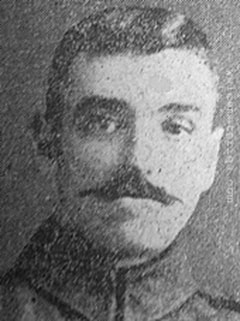
37542 Private
Henry Procter
8th Bn. East Lancashire Regiment
25th September 1917, aged 39.
Plot XXV. F. 5.
Husband of Mary Jane Procter, of 130, Knotts Lane, Colne, Lancs.
Born in Burnley, prior to enlisting, Harry was an Overlooker in Messrs. Pilling's Riverside Mill at Colne. He was the youngest son of Henry Procter a well known Bread Baker of Oxford Road, Burnley.
Harry had lived in Colne since his marriage to Mary Jane, they had 2 children. Harry received gunshot wounds on the 25th September 1917 and died later that day.
Henry Procter
8th Bn. East Lancashire Regiment
25th September 1917, aged 39.
Plot XXV. F. 5.
Husband of Mary Jane Procter, of 130, Knotts Lane, Colne, Lancs.
Born in Burnley, prior to enlisting, Harry was an Overlooker in Messrs. Pilling's Riverside Mill at Colne. He was the youngest son of Henry Procter a well known Bread Baker of Oxford Road, Burnley.
Harry had lived in Colne since his marriage to Mary Jane, they had 2 children. Harry received gunshot wounds on the 25th September 1917 and died later that day.
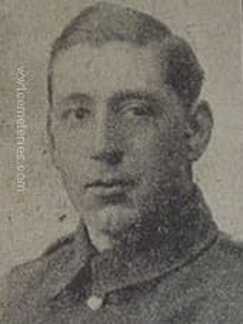
M2/177042 Corporal
Wilfrid Ralph
Mechanical Transport attd. 330th Siege Bty. Royal Garrison Artillery
Army Service Corps
25th September 1917, aged 31.
Plot XXV. F. 8A.
Husband of Elsie Ralph, of 2, Piccadilly Rd., Burnley. Born Burnley.
Wilfrid Ralph
Mechanical Transport attd. 330th Siege Bty. Royal Garrison Artillery
Army Service Corps
25th September 1917, aged 31.
Plot XXV. F. 8A.
Husband of Elsie Ralph, of 2, Piccadilly Rd., Burnley. Born Burnley.

23270 Gunner
Guy Walter Ralston
13th Bde. Australian Field Artillery
4th October 1917, aged 28.
Plot XX. F. 5.
Son of John Bryce Ralston and Elizabeth (his wife) of Wellcamp, Darling Downs, Queensland. Native of New Zealand.
A native of Bulls, New Zealand, Gnr Ralston was a farmer from Toowoomba, Qld prior to enlistment and embarked with the 3rd Reinforcements, 21st Howitzer Brigade from Sydney on HMAT Ajana on 5 July 1916. On 4 October 1917, aged 28, he received wounds to the chest, face and arm from a shell burst, initially he was "conscious and cheerful" and not thought to be in any danger but his condtion deteriorated and he died later the same day.
Guy Walter Ralston
13th Bde. Australian Field Artillery
4th October 1917, aged 28.
Plot XX. F. 5.
Son of John Bryce Ralston and Elizabeth (his wife) of Wellcamp, Darling Downs, Queensland. Native of New Zealand.
A native of Bulls, New Zealand, Gnr Ralston was a farmer from Toowoomba, Qld prior to enlistment and embarked with the 3rd Reinforcements, 21st Howitzer Brigade from Sydney on HMAT Ajana on 5 July 1916. On 4 October 1917, aged 28, he received wounds to the chest, face and arm from a shell burst, initially he was "conscious and cheerful" and not thought to be in any danger but his condtion deteriorated and he died later the same day.
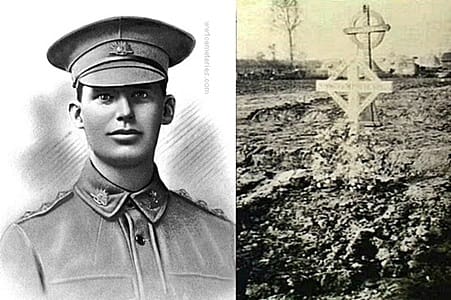
Lieutenant
James Mansfield Reid, M. C.
2nd Field Coy. Australian Engineers
30th October 1917, aged 29.
Plot XXI. BB. 18.
Son of George Watson Reid and Lillias Margaret Reid, of "Clyde," Sackville St., Kew East, Victoria, Australia. Native of Williamstown, Victoria.
A civil engineer, James Reid was working as officer-in-charge of the contruction of the Linton-Skipton Railway when he enlisted on 26 April 1915. On 26 October 1917, Lt Reid was injured by shell fire, dying four days later. He is buried at Lijssenthoek Military Cemetery, Belgium. On 26 November 1917 the London Gazette announced that Lt Reid was posthumously awarded the Military Cross (MC) for his actions in early 1917; "For conspicuous gallantry and devotion to duty in the successful construction of a strong point just behind the front line, though badly hampered by the loss of three NCOs. During the whole of the time his work was subjected to the heaviest shell fire".
16635 Private W. A. Skone was with James Reid when he was mortally wounded, he recalled:
"We were at Passchendaele on the 26th October, we advanced with a company of infantry up to the Railway Cuttings, we dug in there, and then we got blown out of it. Just as we were retiring, Lt. Reid was struck by a sniper's bullet. half a dozen of us brought him down to the Dressing Station and left him there. He died two days after. He was a splendid officer."
The above image shows James Reid's original grave marker at Lijssenthoek, it is the higher of the two crosses.
James Mansfield Reid, M. C.
2nd Field Coy. Australian Engineers
30th October 1917, aged 29.
Plot XXI. BB. 18.
Son of George Watson Reid and Lillias Margaret Reid, of "Clyde," Sackville St., Kew East, Victoria, Australia. Native of Williamstown, Victoria.
A civil engineer, James Reid was working as officer-in-charge of the contruction of the Linton-Skipton Railway when he enlisted on 26 April 1915. On 26 October 1917, Lt Reid was injured by shell fire, dying four days later. He is buried at Lijssenthoek Military Cemetery, Belgium. On 26 November 1917 the London Gazette announced that Lt Reid was posthumously awarded the Military Cross (MC) for his actions in early 1917; "For conspicuous gallantry and devotion to duty in the successful construction of a strong point just behind the front line, though badly hampered by the loss of three NCOs. During the whole of the time his work was subjected to the heaviest shell fire".
16635 Private W. A. Skone was with James Reid when he was mortally wounded, he recalled:
"We were at Passchendaele on the 26th October, we advanced with a company of infantry up to the Railway Cuttings, we dug in there, and then we got blown out of it. Just as we were retiring, Lt. Reid was struck by a sniper's bullet. half a dozen of us brought him down to the Dressing Station and left him there. He died two days after. He was a splendid officer."
The above image shows James Reid's original grave marker at Lijssenthoek, it is the higher of the two crosses.
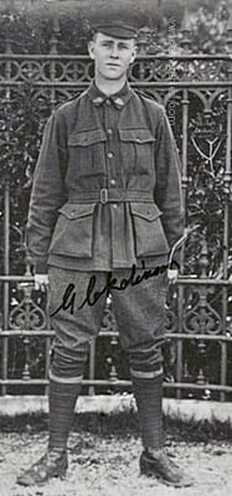
476 Lance Corporal
George Collis Robinson
25th Coy. Australian Machine Gun Corps
27th October 1917, aged 21.
Plot XXII. C. 17.
Son of James and Emily Wells Robinson, of Badger Corner (Flinders Island), Tasmania.
L. Cpl Robinson enlisted on 21 July 1916 and died of wounds. He was admitted to No.2 (Canadian) C. C. S. on 27 October 1917 with shell wounds, compound fractures of both legs, left arm and head, he died shortly after admission at 5.35.a.m. on the same day.
5071 Private H. C. Nagle witnessed the incident in which George Robinson was wounded:
"He was badly knocked by a shell, he was in a pill box at Zonnebeke and the pill box was blown in on him."
3997 Corporal W. S. Rankin added:
"He was in a very exposed position, unapproachable by day when he was hit and he lay there all day. they carried him out at night."
George Collis Robinson
25th Coy. Australian Machine Gun Corps
27th October 1917, aged 21.
Plot XXII. C. 17.
Son of James and Emily Wells Robinson, of Badger Corner (Flinders Island), Tasmania.
L. Cpl Robinson enlisted on 21 July 1916 and died of wounds. He was admitted to No.2 (Canadian) C. C. S. on 27 October 1917 with shell wounds, compound fractures of both legs, left arm and head, he died shortly after admission at 5.35.a.m. on the same day.
5071 Private H. C. Nagle witnessed the incident in which George Robinson was wounded:
"He was badly knocked by a shell, he was in a pill box at Zonnebeke and the pill box was blown in on him."
3997 Corporal W. S. Rankin added:
"He was in a very exposed position, unapproachable by day when he was hit and he lay there all day. they carried him out at night."
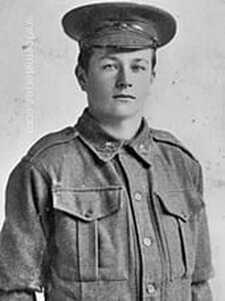
2408 Private
George Edward Rogers
31st Bn. Australian Infantry, A. I. F.
28th September 1917, aged 19.
Plot XXIV. D. 17A.
Son of Jeffery Edmund Rogers and Catherine Rogers, of Bailey St., Westmead, New South Wales.
A carpenter before enlisting in September 1915, Pte Rogers left Australia for Egypt with the 4th Reinforcements in March 1916, and arrived in France for service on the Western Front in July 1916. Pte Rogers was a battalion runner during the attack on Polygon Wood when he received abdominal wounds from shell fragments. He was taken to the 10th Casualty Clearing Station at Lijssenthoek where he died two days later, aged 19.
George Edward Rogers
31st Bn. Australian Infantry, A. I. F.
28th September 1917, aged 19.
Plot XXIV. D. 17A.
Son of Jeffery Edmund Rogers and Catherine Rogers, of Bailey St., Westmead, New South Wales.
A carpenter before enlisting in September 1915, Pte Rogers left Australia for Egypt with the 4th Reinforcements in March 1916, and arrived in France for service on the Western Front in July 1916. Pte Rogers was a battalion runner during the attack on Polygon Wood when he received abdominal wounds from shell fragments. He was taken to the 10th Casualty Clearing Station at Lijssenthoek where he died two days later, aged 19.
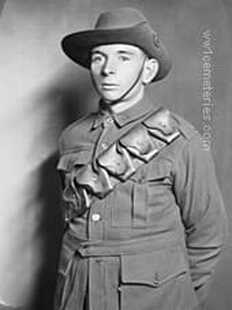
6555 Private
Wilfred Ernest Rokahr
6th Bn. Australian Infantry, A. I. F.
4th October 1917, aged 23.
Plot XX. K. 17A.
Son of George and Mary Jane Rokahr, of Dunolly, Victoria, Australia.
A 21 year old labourer prior to enlisting on 17 May 1916, he embarked for overseas with the 21st Reinforcements from Melbourne on 2 October 1916 aboard HMAT Nestor. After being wounded in action in Belgium on 4 October 1917, he died of wounds that same day.
Wilfred Ernest Rokahr
6th Bn. Australian Infantry, A. I. F.
4th October 1917, aged 23.
Plot XX. K. 17A.
Son of George and Mary Jane Rokahr, of Dunolly, Victoria, Australia.
A 21 year old labourer prior to enlisting on 17 May 1916, he embarked for overseas with the 21st Reinforcements from Melbourne on 2 October 1916 aboard HMAT Nestor. After being wounded in action in Belgium on 4 October 1917, he died of wounds that same day.
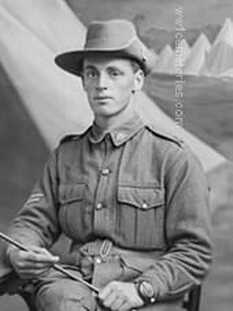
5148 Sergeant
Hugh Madigan Ross
38th Bn. Australian Infantry, A. I. F.
14th october 1917, aged 24.
Plot XXI. C. 5.
Son of Hugh and Celia Griffiths Ross, of Riverside, Tambo Upper, Victoria, Australia.
Sgt Ross enlisted on 9 August 1915 and embarked aboard HMAT Themistocles on 28 July 1916. On 14 October 1917 he was shot in the neck and lower jaw at Passchendaele in Belgium and died of wounds later the same day.
Hugh Madigan Ross
38th Bn. Australian Infantry, A. I. F.
14th october 1917, aged 24.
Plot XXI. C. 5.
Son of Hugh and Celia Griffiths Ross, of Riverside, Tambo Upper, Victoria, Australia.
Sgt Ross enlisted on 9 August 1915 and embarked aboard HMAT Themistocles on 28 July 1916. On 14 October 1917 he was shot in the neck and lower jaw at Passchendaele in Belgium and died of wounds later the same day.
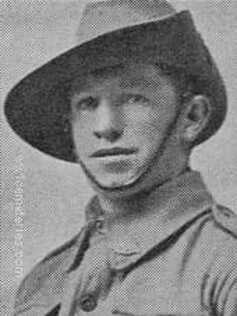
2802 Private
David Rowland
56th Bn. Australian Infantry, A. I. F.
26th September 1917, aged 23.
Plot XXIII. C. 11.
From Granville, NSW. A labourer prior to enlisting, he embarked from Sydney aboard HMAT Euripides (A14) on 2 November 1915. He was wounded in action at Polygon Wood, Belgium on 26 September 1917 and died later that day at the 17th Casualty Clearing Station, Belgium, aged 23.
David Rowland
56th Bn. Australian Infantry, A. I. F.
26th September 1917, aged 23.
Plot XXIII. C. 11.
From Granville, NSW. A labourer prior to enlisting, he embarked from Sydney aboard HMAT Euripides (A14) on 2 November 1915. He was wounded in action at Polygon Wood, Belgium on 26 September 1917 and died later that day at the 17th Casualty Clearing Station, Belgium, aged 23.

293213 Acting Bombardier
Harold William Haberley Rudge (Served as William Haberley Middleton)
140th Heavy Battery, Royal Garrison Artillery
8th June 1940.
Plot XV. I. 13A.
The information below supplied by 'The Ellesmerian Club', the alumni organisation for Ellesmere College where Harold was a pupil.
Harold William Haberley Rudge (Served as William Haberley Middleton)
140th Heavy Battery, Royal Garrison Artillery
8th June 1940.
Plot XV. I. 13A.
The information below supplied by 'The Ellesmerian Club', the alumni organisation for Ellesmere College where Harold was a pupil.
Harold William Haberley Rudge boarded for seven terms at Ellesmere College from September 1905 through to December 1907. He was the son of Edward Thomas and Harriet Brooke Rudge and came from Summerfield, Birmingham where his father was a bank manager for Lloyds Bank. He and his two sisters were born in Handsworth, Birmingham, Harold on 16th June 1891.
Harold’s early education was at Fiveways, Birmingham and when he arrived at Ellesmere he would seem to have been a reliable citizen who played hockey, football and cricket for his dormitory, ‘Woodard’. With regards to the latter sport, in the summer of 1906, he managed to score four runs in a total of four innings. He was also an active member of the Officer Training Corps.
He continued his education after he left Ellesmere as in the 1911 Census he is recorded as being an Art Student in the “Metal Trade”, presumably at a Birmingham college for he was still living at home with his parents.
The outbreak of war saw Harold keen to enlist for he did so on 3rd September 1914 to become Bombardier (Corporal), Service No. 293213, in the 140th (Hammersmith) Heavy Battery, the Royal Garrison Artillery. This battery arrived in Le Havre in mid-April 1916 having embarked at Southampton. It came under the command of No. 43 Heavy Artillery Group and started to operate in neighbourhood of Labuissiere. It became a six gun battery in August that year.
Harold served as William Haberley Middleton, but why he chose to assume his mother’s name is not known. Indeed, he gave his birthplace as Euston and enlisted in the same place. Why he chose to be duplicitous on these points cannot be discovered.
The battery moved around France and Belgium during the year and by June 1917 it was part of the Northern Counter Battery Double Group in the area around Oost Dunkerke. It was here that Harold was wounded. He died in No. 10 Casualty Clearing Station on 8th June 1917.
His death, under his full name, was recorded in the Birmingham Daily Post of 16th June 1917 – he should have been celebrating his 26th birthday that day.
He was buried at the Lijssenthoek Military Cemetery and was posthumously awarded the Victory and British War Medals. These, together with his effects, were left to his father who still resided in Summerfield, Birmingham.
His life is commemorated on memorials at Witton Cemetery, Birmingham; at St. Germain’s Church, Edgbaston and at Ellesmere College.
Harold’s early education was at Fiveways, Birmingham and when he arrived at Ellesmere he would seem to have been a reliable citizen who played hockey, football and cricket for his dormitory, ‘Woodard’. With regards to the latter sport, in the summer of 1906, he managed to score four runs in a total of four innings. He was also an active member of the Officer Training Corps.
He continued his education after he left Ellesmere as in the 1911 Census he is recorded as being an Art Student in the “Metal Trade”, presumably at a Birmingham college for he was still living at home with his parents.
The outbreak of war saw Harold keen to enlist for he did so on 3rd September 1914 to become Bombardier (Corporal), Service No. 293213, in the 140th (Hammersmith) Heavy Battery, the Royal Garrison Artillery. This battery arrived in Le Havre in mid-April 1916 having embarked at Southampton. It came under the command of No. 43 Heavy Artillery Group and started to operate in neighbourhood of Labuissiere. It became a six gun battery in August that year.
Harold served as William Haberley Middleton, but why he chose to assume his mother’s name is not known. Indeed, he gave his birthplace as Euston and enlisted in the same place. Why he chose to be duplicitous on these points cannot be discovered.
The battery moved around France and Belgium during the year and by June 1917 it was part of the Northern Counter Battery Double Group in the area around Oost Dunkerke. It was here that Harold was wounded. He died in No. 10 Casualty Clearing Station on 8th June 1917.
His death, under his full name, was recorded in the Birmingham Daily Post of 16th June 1917 – he should have been celebrating his 26th birthday that day.
He was buried at the Lijssenthoek Military Cemetery and was posthumously awarded the Victory and British War Medals. These, together with his effects, were left to his father who still resided in Summerfield, Birmingham.
His life is commemorated on memorials at Witton Cemetery, Birmingham; at St. Germain’s Church, Edgbaston and at Ellesmere College.
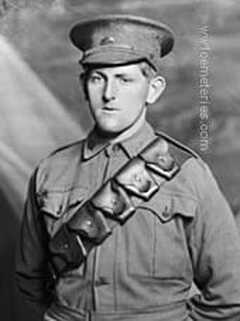
10976 Gunner
Frederick Daniel Rundle
15th Bty. 5th Bde. Australian Field Artillery
25th October 1917, aged 20.
Plot XXII. A. 16.
Son of Samuel Charles and Louisa Margaret Rundle, of 40, Goderick St., Inveresk, Launceston, Tasmania.
An 18 year old carpenter prior to enlisting on 1 October 1915, he embarked for overseas with the 2nd Reinforcements from Melbourne on 5 January 1916 aboard HMAT Afric. He served on the Western Front with the 22nd and the 5th Field Artillery Brigades and was wounded in action in Belgium on 23 October 1917. He died of wounds on 25 October 1917.
Frederick Daniel Rundle
15th Bty. 5th Bde. Australian Field Artillery
25th October 1917, aged 20.
Plot XXII. A. 16.
Son of Samuel Charles and Louisa Margaret Rundle, of 40, Goderick St., Inveresk, Launceston, Tasmania.
An 18 year old carpenter prior to enlisting on 1 October 1915, he embarked for overseas with the 2nd Reinforcements from Melbourne on 5 January 1916 aboard HMAT Afric. He served on the Western Front with the 22nd and the 5th Field Artillery Brigades and was wounded in action in Belgium on 23 October 1917. He died of wounds on 25 October 1917.
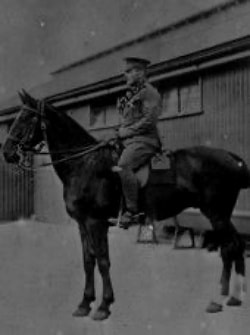
23324 Serjeant
Edgar Runyeard, M. M.
3rd Signal Company, Royal Engineers
20th March 1916, aged 26.
Plot V. D. 9.
Son of Frederick John and Flora Runyeard, of 2, Rowden's Cottages, Sherfield English, Romsey, Hants.
Picture courtesy of great nephew, Tony Moody
Edgar Runyeard, M. M.
3rd Signal Company, Royal Engineers
20th March 1916, aged 26.
Plot V. D. 9.
Son of Frederick John and Flora Runyeard, of 2, Rowden's Cottages, Sherfield English, Romsey, Hants.
Picture courtesy of great nephew, Tony Moody
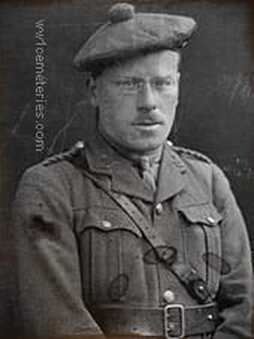
Lieutenant
Roy Tessier Seaver Sachs
16th Bn. Canadian Infantry
13th June 1916
Plot VI. A. 32.
Roy Tessier Seaver Sachs
16th Bn. Canadian Infantry
13th June 1916
Plot VI. A. 32.
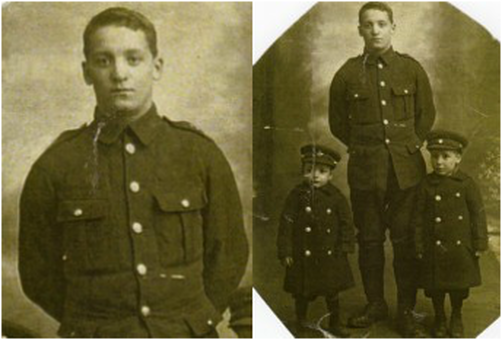
11557 Private
John Thomas Sargent
6th Bn. King's Own Yorkshire Light Infantry
24th July 1915, aged 21.
Plot III. A. 17A.
Son of Alfred and Emma Sargent, of 9, Stratford Square, Northgate, Wakefield, Yorks. Born Astley, near Leeds.
John had just spent a short break at home and grandmother wanted to have a photograph of her three boys, John, Alfred and Harry. Harry was my father and he is standing to the left of John but on the right as you look at the picture. The smaller uniforms were made by my grandmother. Sadly on his return John was killed.
Picture courtesy of Barbara Shulver (Niece)
John Thomas Sargent
6th Bn. King's Own Yorkshire Light Infantry
24th July 1915, aged 21.
Plot III. A. 17A.
Son of Alfred and Emma Sargent, of 9, Stratford Square, Northgate, Wakefield, Yorks. Born Astley, near Leeds.
John had just spent a short break at home and grandmother wanted to have a photograph of her three boys, John, Alfred and Harry. Harry was my father and he is standing to the left of John but on the right as you look at the picture. The smaller uniforms were made by my grandmother. Sadly on his return John was killed.
Picture courtesy of Barbara Shulver (Niece)
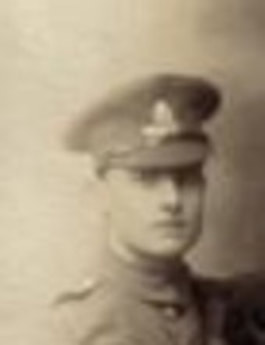
216472 Gunner
Arthur Thomas (Tommy) Saye
"D" Battery, 157th Brigade, Royal Field Artillery
5th October 1918, aged 20.
Plot XXX. A. 5.
Born 28/04/1898, the son of Walter and Sarah Saye, of Great Wigborough, Tolleshunt D'Arcy, Essex. Brother of Ernest Saye, who is commemorated on the Thiepval Memorial, follow link for an image of Ernest Saye.
Picture courtesy of Heather Johnson, great-niece of this soldier
Arthur Thomas (Tommy) Saye
"D" Battery, 157th Brigade, Royal Field Artillery
5th October 1918, aged 20.
Plot XXX. A. 5.
Born 28/04/1898, the son of Walter and Sarah Saye, of Great Wigborough, Tolleshunt D'Arcy, Essex. Brother of Ernest Saye, who is commemorated on the Thiepval Memorial, follow link for an image of Ernest Saye.
Picture courtesy of Heather Johnson, great-niece of this soldier
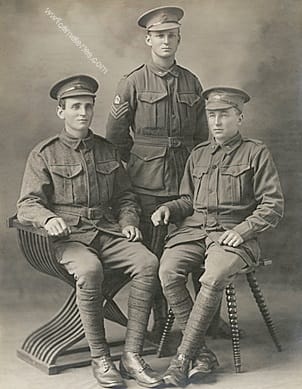
Second Lieutenant
William Keith Seabrook
17th Bn. Australian Infantry, A. I. F.
21st September 1917, aged 21.
Plot XXIII. B. 5.
Son of William George and Fanny Isabel Seabrook, of Great North Rd., Five Dock, Sydney, New South Wales. His brothers George Ross Seabrook and Theo Leslie Seabrook also fell.
The Seabrook brothers; 6147 Private, Theo Leslie Seabrook (L), Second Lieutenant, William Keith Seabrook (C) and 6174 Private, George Ross Seabrook (R). Theo and George were killed in action near the Menin Road on the 20th September 1917, William died of wounds received nearby the following day.
The Final Hours of the Seabrook Brothers
The Seabrook brothers, Theo (25), George (24) and 20 year old William (Known as Keith) all joined up together in August 1916, joining the 17th Battalion. William had previously tried to join up in 1915 but was discharged almost immediately.
By the time the brothers reached Belgium it was June 1917, they would first see action together in the Battle of the Menin Road which commenced on 20th September 1917. Tragically their first battle would also be their last, all 3 brothers were to die within 24 hours of each other. Theo and George were killed in action on the first day of battle and although witnesses recall seeing the grave of one of the brothers close by the Menin Road, sadly, today neither man has a known grave and both are commemorated on the Menin Gate Memorial, William Keith Seabrook is buried at Lijssenthoek Military Cemetery, close to the site of the hospital where he died.
The Battle of the Menin Road was an offensive operation which was part of the Third Battle of Ypres, it's objective was to take sections of the ridge east of Ypres which were crossed by the Menin Road. This operation would see the first use of Australian troops in Third Ypres. The Seabrook brothers were part of the 17th Battalion of Australian Infantry and were to a part of the initial attack. Ultimately the attack was successful, although the two A. I. F. divsions which took part (1st and 2nd) sustained over 5000 casualties, including the deaths of the three Seabrook brothers.
Prior to the attack, Private T Bowman, "C" Coy. 17th Bn., had recorded the following in his diary;
"Sept. 19th - Troops left at midnight for the firing line, Keith (Lieut. Seabrook) very pale and anxious, took his equipment, then, a final handshake, very spontaneous and affectionate.
20th Sept - Hop over this morning; 7.a.m. Corporal Allport and 3 others return slightly wounded and say objectives gained brilliantly. Keith wounded."
6642 Private E. A. Walker who was behind Lt. Seabrook believed he had been killed instantly:
"We were going up the line to join the platoon of Lewis Gunners and a shell dropped right over Lt. Seabrook and got about 7 men. He was killed outright, I only pulled out one man and all his clothes were burnt. The other 6 were dead including Lt. Seabrook we were on the Menin Road near Ypres."
Other witnesses stated that Keith was hit by fragments of a phospherous shell at midnight on the 19th/20th September, his wounds so bad that Corporal James C. Abbey of the Australian Medical Corps later said:
"He was wounded on the night of the 19th/20th September whilst going into the line, I personally dressed his wounds but they were of such a nature that I do not think it advisable to let his people know what they were. He was taken away and reached the 10th Casualty Clearing Station, where he died and he was buried in the soldiers cemetery attached."
5359 Private J. Harmon gave further information on the location of the incident:
"I saw him wounded just on the right of a place called Hellfire Corner, he was caught by a shell."
The commanding officer of No.10 Casualty Clearing Station later confirmed that Keith Seabrook died from multiple shell wounds. His body was buried in the cemetery adjacent to the hospital.
On the 24th September 1917 the battalion was sent back out of the line to Poperinghe; Private T. Bowman's diary records the following:
"We arrived at rest camp near Poperinghe and boys tell me Keith was seriously wounded by a phosperous shell (which also knocked out 8 of his men) about a mile beyond Hellfire Corner on the way up to Glencorse Wood, just before they struck the duckboards. Captain Allan, our O. C. sent for me and told me Keith was dead and was buried on the 21st in the military cemetery at Poperinghe. I went straight away to Poperinghe and found that Keith died at the 6th Clearing Station close by. I returned and asked for Capt. Allan who asked for the parents' address. He wrote a letter of condolence and sympathy as also did our chaplain. The following day I went to the cemetery and was shown the grave by the corporal, our own boys filled it in."
The circumstances surrounding of the deaths of Theo and George are somewhat uncertain, many men gave differing versions of the incidents, some said Theo and George were killed together, others that they were all killed in separate incidents and there were those that said all 3 brothers were killed in the same incident. Investigation of the casualty reports disproves the latter theory, with many men telling of witnessing the older boys deaths after the commencement of the battle (7.a.m.). By this time Lieutenant William Keith Seabrook wounded at midnight would have already been on his way to hospital at Poperinghe.
6232 Private, A. R. Allan was one of thise who believed that Theo and George were killed in the same incident, he wrote of George:
"I saw him killed by a shell in the front line at Zonnebeke. He was killed at the same time as his brother. (Theo)"
1682 Private, J Crawfield also recalled both brothers being killed in the same incident:
"I knew them both well, on the 20th September at Zonnebeke, one was going into the line and the other was coming out, - at night, when a shell burst and killed both of them, death was instantaneous and they were given a field burial."
However, one man who believed the two older brothers to have been killed in separate incidents and had also been with Lt. Keith Seabrook when he was wounded earlier was 6334 Private, Andrew Marshall, he recalled:
"I saw one of the Seabrook's lying dead, killed outright by a shell, up past Anzac House on the front line. He was there when I came out. I saw Lieutenant Seabrook wounded, I was alongside him, he was taken to the 3rd C. C. S. and died there. It was the third brother who told me that the private lying dead was his brother and I then told him of the Lieutenant and the last I saw of the third brother was going up towards the Lieutenant. I believe he was killed there also."
Private Marshall would also give the following information, where he claims to have been standing with George Seabrook when they stumbled upon the body of Theo:
"The battalion was at Anzac House, Polygon Wood, in action. We hopped over at about 7.a.m. When we had reached our objective and were consolidating the position I was with George Seabrook, a brother of T. L. Seabrook, when George, who was himself killed later on pointed out his brother T. L. Seabrook's body lying on the ground, he had been killed by a shell, his brother Lt. W. K. Seabrook had been killed still earlier in the day and the Lieutenant had been my officer."
It would appear that after they had discovered Theo's body and learning that his youngest brother was badly wounded, George Seabrook set off in search of him. Sadly he was also killed before he could reach him, becoming the third brother to be killed or mortally wounded within a few hours.
Sergeant Chas. Troupe of the 17th Battalion told the Australian Red Cross;
"I knew two brothers called Seabrook, one of them was killed instantaneously beside me on Sept. 20th in front of Ypres. The 18th Bn. had taken Anzac House and we were advancing from there. The Germans were putting up a very heavy barrage and we were consolidating our position. Sergeant Eric Powell helped me to lift him up on to the Parados, we were relieved the next morning and the trench where he fell was deserted altogether, I cannot say whether his initials were G. R. or T. L., the brother I mean was the taller of the two. The other brother was killed on the same day but I did not see him."
Taking into account both Andrew Marshall's statement and also that of Sgt. Troupe, it would appear that it was Theo who was first to be killed in the trench. Private Marshall's description of being with George when they found Theo's body is corroborated by Sgt. Troupe mentioning that the body he helped remove from the trench was the "taller of the two." George Seabrook is believed to have been around about 5ft 4' whilst Theo was taller at around 5ft 7'.
Private Andrew Marshall, who had been present at the wounding of Lt. Seabrook and the death of at least one other of the brothers suvived the war.
The following passage shows the confusion that must have reigned during the night prior to the commencement of the battle, 6104 Private, Lawrence McKinnery believed that all 3 brothers were hit by the same shell, he vividly recalled:
"I saw the three brothers knocked, two killed outright and one wounded and died after by the same shell about 1.30.a.m. as we were going up just to the right of Hellfire Corner, there was no time to bury them. I was amongst it myself and saw the shell, a phospe. (rous) shell which lit up the ground so we could see everything. There were dozens killed or wounded by that shell and I saw the two Seabrook's dead and the third lying wounded."
So what did actually happen? Taking into account the many eyewitness accounts, it appears that at approximately midnight on the night of 19th/20th September 1917, Lt. William Keith Seabrook, the youngest brother was leading his men into the support trenches when a phospherous shell exploded above them. He was seriously wounded and another 7 of his men were either badly wounded or killed outright.
The other two brothers, Theo and George appear to have been unaware that their younger brother was mortally wounded and went over the top at 7.a.m. on the morning of the 20th, they helped their battalion take their objectives and consolidated in the area around Anzac House, a concrete shelter in Polygon Wood. It was here that George discovered the body of Theo and apparently learned that his youngest brother had also been mortally wounded, he set of back to try to find him but somewhere along the way he was killed, there do not appear to have been any witnesses to his actual death.
Of course it is possible that both the older brothers were killed by the same shell as some witnessess state, though the evidence does point to the above circumstances being closer to the truth.
Whatever the true facts of that fateful few hours are, William and Fanny Seabrook, back in Five Docks had lost 3 sons. The grieving parents received official notification of the death of Keith but news of both Theo and George was harder to come by, witness reports were, as can be seen from the text above both contradictory and unclear.
Eventually news reached Australia that Theo was dead, although sadly his body was never found, the field burial that he received was no more than his body being flung into one of the many shell holes littering the battlefield, where it probably still lies to this day.
As no definitive news of George was received despite numerous letters to the Australian authorities requesting information on her son, his mother continued to harbour hope that he would still return home, of course this was not to happen and George's body probably still lies undiscovered close by that of his older brother, Theo.
Should their unidentified bodies have been re-interred after the war, it is likely that they lie in one of the many unidentified Australian graves in the military cemeteries which surround the old battlefield near to Polygon Wood.
Text © Brent Whittam/WW1cemeteries.com
William Keith Seabrook
17th Bn. Australian Infantry, A. I. F.
21st September 1917, aged 21.
Plot XXIII. B. 5.
Son of William George and Fanny Isabel Seabrook, of Great North Rd., Five Dock, Sydney, New South Wales. His brothers George Ross Seabrook and Theo Leslie Seabrook also fell.
The Seabrook brothers; 6147 Private, Theo Leslie Seabrook (L), Second Lieutenant, William Keith Seabrook (C) and 6174 Private, George Ross Seabrook (R). Theo and George were killed in action near the Menin Road on the 20th September 1917, William died of wounds received nearby the following day.
The Final Hours of the Seabrook Brothers
The Seabrook brothers, Theo (25), George (24) and 20 year old William (Known as Keith) all joined up together in August 1916, joining the 17th Battalion. William had previously tried to join up in 1915 but was discharged almost immediately.
By the time the brothers reached Belgium it was June 1917, they would first see action together in the Battle of the Menin Road which commenced on 20th September 1917. Tragically their first battle would also be their last, all 3 brothers were to die within 24 hours of each other. Theo and George were killed in action on the first day of battle and although witnesses recall seeing the grave of one of the brothers close by the Menin Road, sadly, today neither man has a known grave and both are commemorated on the Menin Gate Memorial, William Keith Seabrook is buried at Lijssenthoek Military Cemetery, close to the site of the hospital where he died.
The Battle of the Menin Road was an offensive operation which was part of the Third Battle of Ypres, it's objective was to take sections of the ridge east of Ypres which were crossed by the Menin Road. This operation would see the first use of Australian troops in Third Ypres. The Seabrook brothers were part of the 17th Battalion of Australian Infantry and were to a part of the initial attack. Ultimately the attack was successful, although the two A. I. F. divsions which took part (1st and 2nd) sustained over 5000 casualties, including the deaths of the three Seabrook brothers.
Prior to the attack, Private T Bowman, "C" Coy. 17th Bn., had recorded the following in his diary;
"Sept. 19th - Troops left at midnight for the firing line, Keith (Lieut. Seabrook) very pale and anxious, took his equipment, then, a final handshake, very spontaneous and affectionate.
20th Sept - Hop over this morning; 7.a.m. Corporal Allport and 3 others return slightly wounded and say objectives gained brilliantly. Keith wounded."
6642 Private E. A. Walker who was behind Lt. Seabrook believed he had been killed instantly:
"We were going up the line to join the platoon of Lewis Gunners and a shell dropped right over Lt. Seabrook and got about 7 men. He was killed outright, I only pulled out one man and all his clothes were burnt. The other 6 were dead including Lt. Seabrook we were on the Menin Road near Ypres."
Other witnesses stated that Keith was hit by fragments of a phospherous shell at midnight on the 19th/20th September, his wounds so bad that Corporal James C. Abbey of the Australian Medical Corps later said:
"He was wounded on the night of the 19th/20th September whilst going into the line, I personally dressed his wounds but they were of such a nature that I do not think it advisable to let his people know what they were. He was taken away and reached the 10th Casualty Clearing Station, where he died and he was buried in the soldiers cemetery attached."
5359 Private J. Harmon gave further information on the location of the incident:
"I saw him wounded just on the right of a place called Hellfire Corner, he was caught by a shell."
The commanding officer of No.10 Casualty Clearing Station later confirmed that Keith Seabrook died from multiple shell wounds. His body was buried in the cemetery adjacent to the hospital.
On the 24th September 1917 the battalion was sent back out of the line to Poperinghe; Private T. Bowman's diary records the following:
"We arrived at rest camp near Poperinghe and boys tell me Keith was seriously wounded by a phosperous shell (which also knocked out 8 of his men) about a mile beyond Hellfire Corner on the way up to Glencorse Wood, just before they struck the duckboards. Captain Allan, our O. C. sent for me and told me Keith was dead and was buried on the 21st in the military cemetery at Poperinghe. I went straight away to Poperinghe and found that Keith died at the 6th Clearing Station close by. I returned and asked for Capt. Allan who asked for the parents' address. He wrote a letter of condolence and sympathy as also did our chaplain. The following day I went to the cemetery and was shown the grave by the corporal, our own boys filled it in."
The circumstances surrounding of the deaths of Theo and George are somewhat uncertain, many men gave differing versions of the incidents, some said Theo and George were killed together, others that they were all killed in separate incidents and there were those that said all 3 brothers were killed in the same incident. Investigation of the casualty reports disproves the latter theory, with many men telling of witnessing the older boys deaths after the commencement of the battle (7.a.m.). By this time Lieutenant William Keith Seabrook wounded at midnight would have already been on his way to hospital at Poperinghe.
6232 Private, A. R. Allan was one of thise who believed that Theo and George were killed in the same incident, he wrote of George:
"I saw him killed by a shell in the front line at Zonnebeke. He was killed at the same time as his brother. (Theo)"
1682 Private, J Crawfield also recalled both brothers being killed in the same incident:
"I knew them both well, on the 20th September at Zonnebeke, one was going into the line and the other was coming out, - at night, when a shell burst and killed both of them, death was instantaneous and they were given a field burial."
However, one man who believed the two older brothers to have been killed in separate incidents and had also been with Lt. Keith Seabrook when he was wounded earlier was 6334 Private, Andrew Marshall, he recalled:
"I saw one of the Seabrook's lying dead, killed outright by a shell, up past Anzac House on the front line. He was there when I came out. I saw Lieutenant Seabrook wounded, I was alongside him, he was taken to the 3rd C. C. S. and died there. It was the third brother who told me that the private lying dead was his brother and I then told him of the Lieutenant and the last I saw of the third brother was going up towards the Lieutenant. I believe he was killed there also."
Private Marshall would also give the following information, where he claims to have been standing with George Seabrook when they stumbled upon the body of Theo:
"The battalion was at Anzac House, Polygon Wood, in action. We hopped over at about 7.a.m. When we had reached our objective and were consolidating the position I was with George Seabrook, a brother of T. L. Seabrook, when George, who was himself killed later on pointed out his brother T. L. Seabrook's body lying on the ground, he had been killed by a shell, his brother Lt. W. K. Seabrook had been killed still earlier in the day and the Lieutenant had been my officer."
It would appear that after they had discovered Theo's body and learning that his youngest brother was badly wounded, George Seabrook set off in search of him. Sadly he was also killed before he could reach him, becoming the third brother to be killed or mortally wounded within a few hours.
Sergeant Chas. Troupe of the 17th Battalion told the Australian Red Cross;
"I knew two brothers called Seabrook, one of them was killed instantaneously beside me on Sept. 20th in front of Ypres. The 18th Bn. had taken Anzac House and we were advancing from there. The Germans were putting up a very heavy barrage and we were consolidating our position. Sergeant Eric Powell helped me to lift him up on to the Parados, we were relieved the next morning and the trench where he fell was deserted altogether, I cannot say whether his initials were G. R. or T. L., the brother I mean was the taller of the two. The other brother was killed on the same day but I did not see him."
Taking into account both Andrew Marshall's statement and also that of Sgt. Troupe, it would appear that it was Theo who was first to be killed in the trench. Private Marshall's description of being with George when they found Theo's body is corroborated by Sgt. Troupe mentioning that the body he helped remove from the trench was the "taller of the two." George Seabrook is believed to have been around about 5ft 4' whilst Theo was taller at around 5ft 7'.
Private Andrew Marshall, who had been present at the wounding of Lt. Seabrook and the death of at least one other of the brothers suvived the war.
The following passage shows the confusion that must have reigned during the night prior to the commencement of the battle, 6104 Private, Lawrence McKinnery believed that all 3 brothers were hit by the same shell, he vividly recalled:
"I saw the three brothers knocked, two killed outright and one wounded and died after by the same shell about 1.30.a.m. as we were going up just to the right of Hellfire Corner, there was no time to bury them. I was amongst it myself and saw the shell, a phospe. (rous) shell which lit up the ground so we could see everything. There were dozens killed or wounded by that shell and I saw the two Seabrook's dead and the third lying wounded."
So what did actually happen? Taking into account the many eyewitness accounts, it appears that at approximately midnight on the night of 19th/20th September 1917, Lt. William Keith Seabrook, the youngest brother was leading his men into the support trenches when a phospherous shell exploded above them. He was seriously wounded and another 7 of his men were either badly wounded or killed outright.
The other two brothers, Theo and George appear to have been unaware that their younger brother was mortally wounded and went over the top at 7.a.m. on the morning of the 20th, they helped their battalion take their objectives and consolidated in the area around Anzac House, a concrete shelter in Polygon Wood. It was here that George discovered the body of Theo and apparently learned that his youngest brother had also been mortally wounded, he set of back to try to find him but somewhere along the way he was killed, there do not appear to have been any witnesses to his actual death.
Of course it is possible that both the older brothers were killed by the same shell as some witnessess state, though the evidence does point to the above circumstances being closer to the truth.
Whatever the true facts of that fateful few hours are, William and Fanny Seabrook, back in Five Docks had lost 3 sons. The grieving parents received official notification of the death of Keith but news of both Theo and George was harder to come by, witness reports were, as can be seen from the text above both contradictory and unclear.
Eventually news reached Australia that Theo was dead, although sadly his body was never found, the field burial that he received was no more than his body being flung into one of the many shell holes littering the battlefield, where it probably still lies to this day.
As no definitive news of George was received despite numerous letters to the Australian authorities requesting information on her son, his mother continued to harbour hope that he would still return home, of course this was not to happen and George's body probably still lies undiscovered close by that of his older brother, Theo.
Should their unidentified bodies have been re-interred after the war, it is likely that they lie in one of the many unidentified Australian graves in the military cemeteries which surround the old battlefield near to Polygon Wood.
Text © Brent Whittam/WW1cemeteries.com
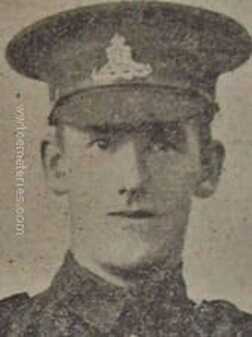
700891 Bombardier
Ernest Percival Seeney
"C" Bty. 330th Bde. Royal Field Artillery
23rd October 1917, aged 27.
Plot XXII. D. 2.
Son of Eli and Ann Seeney, of 24, Padiham Rd., Burnley.
Ernest Percival Seeney
"C" Bty. 330th Bde. Royal Field Artillery
23rd October 1917, aged 27.
Plot XXII. D. 2.
Son of Eli and Ann Seeney, of 24, Padiham Rd., Burnley.
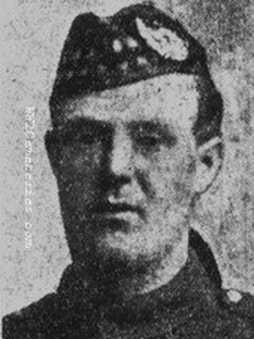
S/10264 Private
Frank Shanley
9th Bn. Gordon Highlanders
4th July 1917, aged 28.
Plot XV. C. 11A.
Son of Catherine and the late Joseph Shanley, of Brierfield, Lancs
Prior to enlisting Frank played football for both Preston North End and Nelson FC.
Frank Shanley
9th Bn. Gordon Highlanders
4th July 1917, aged 28.
Plot XV. C. 11A.
Son of Catherine and the late Joseph Shanley, of Brierfield, Lancs
Prior to enlisting Frank played football for both Preston North End and Nelson FC.
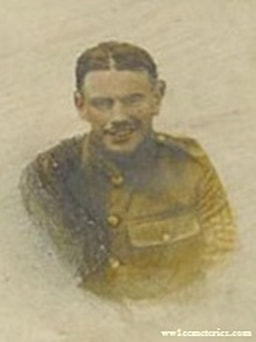
200788 Serjeant
William Shells
19th Bn. Durham Light Infantry
15th October 1918, aged 25.
Plot XXX. D. 18.
Son of Charles France Shells and Elizabeth Shells. Born Armitage Bridge, Huddersfield.
William Shells
19th Bn. Durham Light Infantry
15th October 1918, aged 25.
Plot XXX. D. 18.
Son of Charles France Shells and Elizabeth Shells. Born Armitage Bridge, Huddersfield.
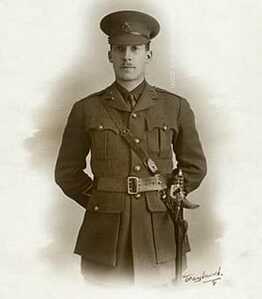
Second Lieutenant
Cyril Shaw Shippey
3rd Bn. attd. 8th Bn. Bedfordshire Regiment
21st December 1915
Plot II. A. 20.
Son of Frederic Shippey, of Pietermaritzburg, Natal. Native of South Africa.
His brother, James Reginald Shippey also fell on 14th October 1914 and is buried in the Bethune Town Cemetery.
Cyril Shaw Shippey
3rd Bn. attd. 8th Bn. Bedfordshire Regiment
21st December 1915
Plot II. A. 20.
Son of Frederic Shippey, of Pietermaritzburg, Natal. Native of South Africa.
His brother, James Reginald Shippey also fell on 14th October 1914 and is buried in the Bethune Town Cemetery.
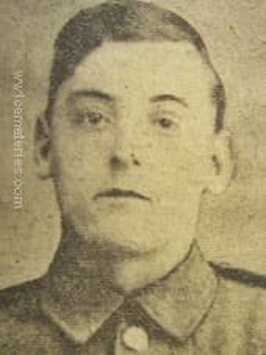
12785 Private
Joseph Shotton
7th Bn. East Lancashire Regiment
13th July 1917, aged 26.
Plot XVI. B. 6A.
Husband of Harriet Shotton, of 35, Robinson St., Burnley.
Joseph Shotton
7th Bn. East Lancashire Regiment
13th July 1917, aged 26.
Plot XVI. B. 6A.
Husband of Harriet Shotton, of 35, Robinson St., Burnley.

202643 Private
Arthur Simpson
1st/4th Bn. The Loyal North Lancashire Regiment
4th June 1917, aged 36.
Plot XII. C. 24.
Son of T. Simpson, J.P., of Hapton, Burnley, Lancs; husband of Ann Simpson, of "The Corners," Rossall Beach, near Fleetwood, Lancs.
Arthur Simpson
1st/4th Bn. The Loyal North Lancashire Regiment
4th June 1917, aged 36.
Plot XII. C. 24.
Son of T. Simpson, J.P., of Hapton, Burnley, Lancs; husband of Ann Simpson, of "The Corners," Rossall Beach, near Fleetwood, Lancs.
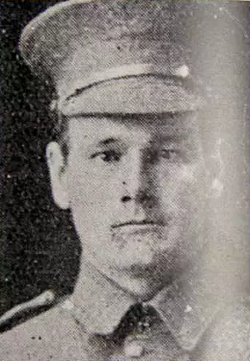
6/2345 Private
John James Skilton
3rd Bn. Canterbury Regiment, N.Z.E.F.
16th December 1917, aged 28.
Plot XXVII. DD. 19.
Son of Thomas Mark and Florence Octavia Skilton, of Collingwood, New Zealand.
John James was one of six brothers (Neal, Sydney, Rupert, Vincent and Philip) that served in WW1.
John died of his wounds in Belgium, Sydney returned to New Zealand to later die from the effects of war.
The remaining four brothers lived long fulfilled lives.
Picture and additional text courtesy of Kay Johnson, Granddaughter of Philip Robert Skilton
John James Skilton
3rd Bn. Canterbury Regiment, N.Z.E.F.
16th December 1917, aged 28.
Plot XXVII. DD. 19.
Son of Thomas Mark and Florence Octavia Skilton, of Collingwood, New Zealand.
John James was one of six brothers (Neal, Sydney, Rupert, Vincent and Philip) that served in WW1.
John died of his wounds in Belgium, Sydney returned to New Zealand to later die from the effects of war.
The remaining four brothers lived long fulfilled lives.
Picture and additional text courtesy of Kay Johnson, Granddaughter of Philip Robert Skilton
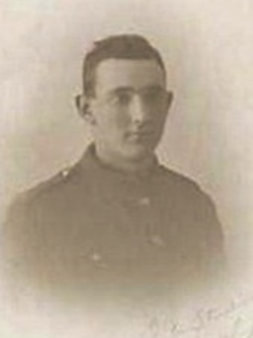
200274 Private
Egbert William Skittles
6th Bn. Royal Berkshire Regiment
2nd August 1917, aged 20.
Plot XVII. C. 17A.
Son of James and Caroline Skittles, of 165, St. Leonard's Rd., Spital, Windsor.
He died on his 20th birthday
Picture courtesy of Heather (Skittles) Wiley, great niece.
Egbert William Skittles
6th Bn. Royal Berkshire Regiment
2nd August 1917, aged 20.
Plot XVII. C. 17A.
Son of James and Caroline Skittles, of 165, St. Leonard's Rd., Spital, Windsor.
He died on his 20th birthday
Picture courtesy of Heather (Skittles) Wiley, great niece.
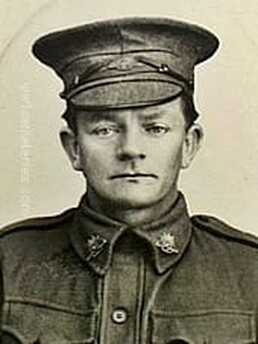
5620 Sapper
Charles Smart
2nd Coy Australian Tunnelling Corps
1st March 1917
Plot XI. B. 10A.
Charles Smart
2nd Coy Australian Tunnelling Corps
1st March 1917
Plot XI. B. 10A.
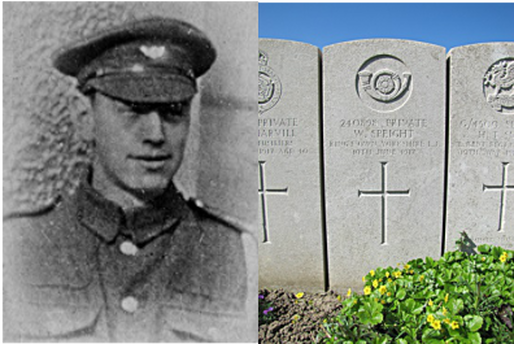
240898 Private
Walter Speight
8th Bn. King's Own Yorkshire Light Infantry
10th June 1917
Plot XV. G. 4.
Images courtesy of great nephew, John Wood
Walter Speight
8th Bn. King's Own Yorkshire Light Infantry
10th June 1917
Plot XV. G. 4.
Images courtesy of great nephew, John Wood
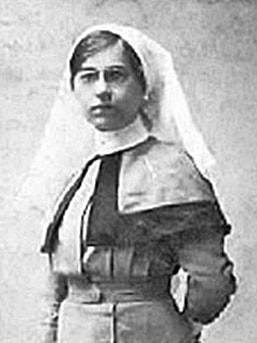
Staff Nurse
Nellie Spindler
44th Casualty Clearing Station, Queen Alexandra's Imperial Military Nursing Service
21st August 1917, aged 26.
Plot XVI. A. 3.
Daughter of George and Elizabeth Spindler, of Wakefield. One of only two female casualties of the Great War buried in Belgium.
Nellie Spindler
44th Casualty Clearing Station, Queen Alexandra's Imperial Military Nursing Service
21st August 1917, aged 26.
Plot XVI. A. 3.
Daughter of George and Elizabeth Spindler, of Wakefield. One of only two female casualties of the Great War buried in Belgium.
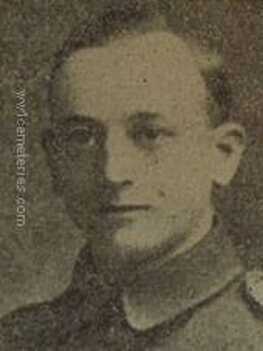
141943 Gunner
Parker Starkie
146th Heavy Bty. Royal Garrison Artillery
28th October 1917, aged 24.
Plot XXI. G. 13.
Son of Hartley and Elizabeth Ann Starkie; husband of Hilda Latham (formerly Starkie), of 38, Eldwick St., Burnley.
Parker Starkie
146th Heavy Bty. Royal Garrison Artillery
28th October 1917, aged 24.
Plot XXI. G. 13.
Son of Hartley and Elizabeth Ann Starkie; husband of Hilda Latham (formerly Starkie), of 38, Eldwick St., Burnley.
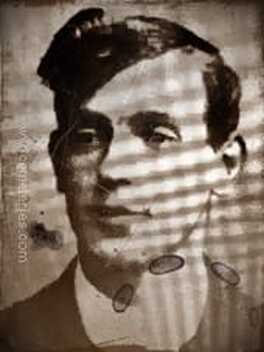
28233 Private
Edmund Staveley
9th Bn. Yorkshire Regiment
9th June 1917
Plot XV. I. 6.
Son of Edmund and Mary Staveley.
Edmund Staveley
9th Bn. Yorkshire Regiment
9th June 1917
Plot XV. I. 6.
Son of Edmund and Mary Staveley.
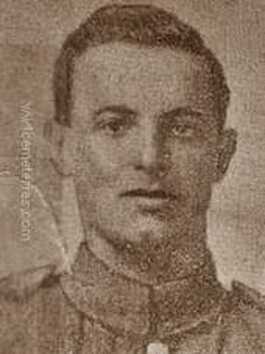
90213 Private
Bertram Stephenson
145th Coy. Machine Gun Corps (Infantry)
28th August 1917, aged 25.
Plot XVIII. G. 19A.
Son of John and Elizabeth Stephenson, of 26, Sackville St., Brierfield, Burnley.
Bertram Stephenson
145th Coy. Machine Gun Corps (Infantry)
28th August 1917, aged 25.
Plot XVIII. G. 19A.
Son of John and Elizabeth Stephenson, of 26, Sackville St., Brierfield, Burnley.
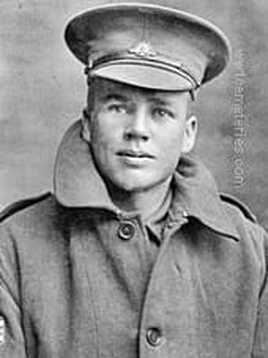
2485 Private
William Norman Stephenson
50th Bn. Australian Infantry, A. I. F.
19th October 1917, aged 27.
Plot XXV. K. 12A.
Son of William Robinson Stephenson and Elizabeth Ann Stephenson, of Kainton, South Australia.
A farmer from Kainton, South Australia, prior to enlistment, he embarked with the 5th Reinforcements from Adelaide on 21 September 1916 aboard HMAT Commonwealth (A73) for Plymouth, England. On arrival at the 13th Training Battalion he reverted to the rank of Private (Pte) and then joined his battalion on the Western Front, France, in mid-December 1916. Pte Stephenson was wounded in action at Broodseinde Ridge, Belgium, on 17 October 1917 and died of these wounds two days later. He was aged 27 years.
William Norman Stephenson
50th Bn. Australian Infantry, A. I. F.
19th October 1917, aged 27.
Plot XXV. K. 12A.
Son of William Robinson Stephenson and Elizabeth Ann Stephenson, of Kainton, South Australia.
A farmer from Kainton, South Australia, prior to enlistment, he embarked with the 5th Reinforcements from Adelaide on 21 September 1916 aboard HMAT Commonwealth (A73) for Plymouth, England. On arrival at the 13th Training Battalion he reverted to the rank of Private (Pte) and then joined his battalion on the Western Front, France, in mid-December 1916. Pte Stephenson was wounded in action at Broodseinde Ridge, Belgium, on 17 October 1917 and died of these wounds two days later. He was aged 27 years.
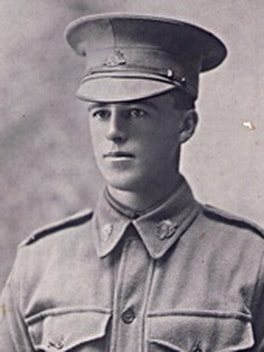
560 Private
George Stevens
11th Coy. Australian Machine Gun Corps
29th September 1917, aged 20.
Plot XXV. B. 10.
Son of George and Elizabeth Stevens, of Rookwood, Warwick, Queensland.
"Our Sacrifice is in what we have lost, his in what he has given" (Inscription on headstone)
Photo courtesy of Michele Streight, great-niece of this soldier
George Stevens
11th Coy. Australian Machine Gun Corps
29th September 1917, aged 20.
Plot XXV. B. 10.
Son of George and Elizabeth Stevens, of Rookwood, Warwick, Queensland.
"Our Sacrifice is in what we have lost, his in what he has given" (Inscription on headstone)
Photo courtesy of Michele Streight, great-niece of this soldier
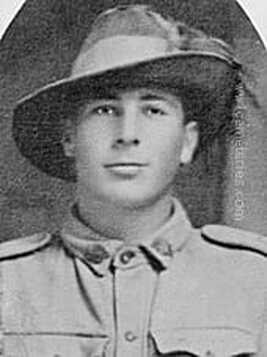
4311 Lance Corporal
John Edward Stewart
3rd Australian Railway Corps
22nd April 1918, aged 25.
Plot XXVI GG. 5A
Son of John James and Mary Elizabeth Stewart, of 129, Sturt St., Ballarat, Victoria, Australia.
John Edward Stewart
3rd Australian Railway Corps
22nd April 1918, aged 25.
Plot XXVI GG. 5A
Son of John James and Mary Elizabeth Stewart, of 129, Sturt St., Ballarat, Victoria, Australia.
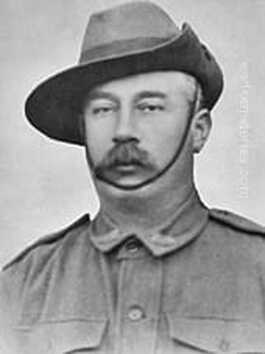
2255 Private
John Samuel Stockdale
46th Bn. Australian Infantry, A. I. F.
12th October 1917, aged 42.
Plot XXI. A. 17.
Son of Benjamin and Mary Stockdale. Native of Australia.
A 44 year old driver from South Yarra, Melbourne, Victoria prior to enlisting on 22 March 1916, he embarked for overseas with the 4th Reinforcements from Melbourne on 16 August 1916 aboard HMAT Orontes. After further training in England, he joined the Battalion in France in November 1916. He was wounded in action near Zonnebeke, Belgium on 11 October 1917 and died from his wounds the next day.
John Samuel Stockdale
46th Bn. Australian Infantry, A. I. F.
12th October 1917, aged 42.
Plot XXI. A. 17.
Son of Benjamin and Mary Stockdale. Native of Australia.
A 44 year old driver from South Yarra, Melbourne, Victoria prior to enlisting on 22 March 1916, he embarked for overseas with the 4th Reinforcements from Melbourne on 16 August 1916 aboard HMAT Orontes. After further training in England, he joined the Battalion in France in November 1916. He was wounded in action near Zonnebeke, Belgium on 11 October 1917 and died from his wounds the next day.
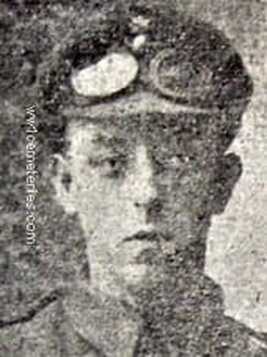
RMA/945(S) Gunner
Fred Stow
Howitzer Bde., Royal Marine Artillery
10th July 1918, aged 22.
Plot XXVIII. D. 18A.
Son of Harry and Emma Stow, of 13, Havelock St., Blackpool. Born Burnley.
Fred Stow
Howitzer Bde., Royal Marine Artillery
10th July 1918, aged 22.
Plot XXVIII. D. 18A.
Son of Harry and Emma Stow, of 13, Havelock St., Blackpool. Born Burnley.
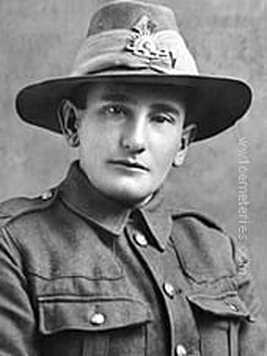
558 Private
John Donald Sutherland
10th Bn. Australian Infantry, A. I. F.
4th October 1917, aged 31.
Plot XX. D. 4.
Son of Martha and the late James Sutherland, of Gilbert St., Gilberton, Adelaide, South Australia. Native of Adelaide, South Australia.
A 26 year old electrician prior to enlisting on 25 August 1914, he embarked for overseas with D Company from Adelaide on 20 October 1914 aboard HMAT Ascanius. After being wounded at Gallipoli on 14 July 1915, he was evacuated to Malta and then to England for medical treatment. Following recovery and further training in England, he re-joined the 10th Battalion in France on 20 August 1917. He was wounded in action on 3 October 1917 at Westhoek Ridge, Belgium and died of his wounds the next day.
John Donald Sutherland
10th Bn. Australian Infantry, A. I. F.
4th October 1917, aged 31.
Plot XX. D. 4.
Son of Martha and the late James Sutherland, of Gilbert St., Gilberton, Adelaide, South Australia. Native of Adelaide, South Australia.
A 26 year old electrician prior to enlisting on 25 August 1914, he embarked for overseas with D Company from Adelaide on 20 October 1914 aboard HMAT Ascanius. After being wounded at Gallipoli on 14 July 1915, he was evacuated to Malta and then to England for medical treatment. Following recovery and further training in England, he re-joined the 10th Battalion in France on 20 August 1917. He was wounded in action on 3 October 1917 at Westhoek Ridge, Belgium and died of his wounds the next day.
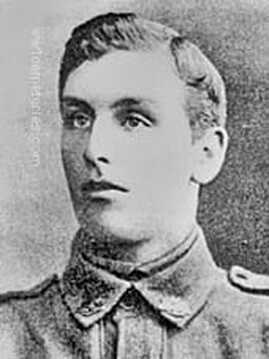
6354 Private
Robert Reginald Taylor
8th Bn. Australian Infantry, A. I. F.
20th September 1917
Plot XXIII. B. 2A.
From Coleraine, Victoria. Pte Taylor enlisted in on 4 March 1916 and served on the Western Front with the 8th Battalion. He was was fatally wounded during the Battle of Menin Road and died on the 20 September 1917.
Robert Reginald Taylor
8th Bn. Australian Infantry, A. I. F.
20th September 1917
Plot XXIII. B. 2A.
From Coleraine, Victoria. Pte Taylor enlisted in on 4 March 1916 and served on the Western Front with the 8th Battalion. He was was fatally wounded during the Battle of Menin Road and died on the 20 September 1917.

1078A Gunner
Percy Croft Templar
1st Bde. Australian Field Artillery
15th October 1917, aged 22.
Plot XXI. H. 12.
Son of Henry Templar and Edith Croft Templar. Native of Sulphur Creek, North West Coast, Tasmania.
A farm hand of Sulphur Creek, Tasmania. 1078 Trooper Templar embarked on 17 June 1915 with the 3rd Australian Light Horse Regiment. He subsequently transferred to the 1st Field Artillery Brigade with the service number 1078A. On 15 October 1917, he received gun shot wounds to the shoulder and legs and died of these wounds at the 10th Casualty Clearing Station in Belgium.
Percy Croft Templar
1st Bde. Australian Field Artillery
15th October 1917, aged 22.
Plot XXI. H. 12.
Son of Henry Templar and Edith Croft Templar. Native of Sulphur Creek, North West Coast, Tasmania.
A farm hand of Sulphur Creek, Tasmania. 1078 Trooper Templar embarked on 17 June 1915 with the 3rd Australian Light Horse Regiment. He subsequently transferred to the 1st Field Artillery Brigade with the service number 1078A. On 15 October 1917, he received gun shot wounds to the shoulder and legs and died of these wounds at the 10th Casualty Clearing Station in Belgium.
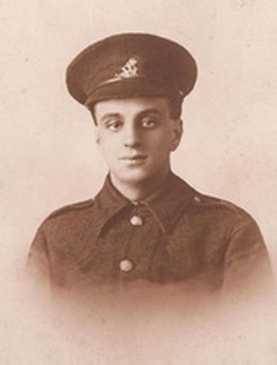
2355 Private
Fred Thornton
1st/6th Bn. Duke of Wellington's Regiment
24th August 1915, aged 23.
Plot III. C. 26A.
Son of Thomas and Margaret Thornton of Skipton, Yorkshire.
His epitaph reads: ‘Greater love hath no man than his’
The following information is credited to Mr Steven Howarth who has researched former Ermysted’s Grammar School (Skipton) pupils for his book: 'A Grammar School at War - the Story of Ermysted's Grammar School during the Great War'. Please click here.
Private Thornton’s battalion was posted to the Ypres area of Belgium in July 1915, where they would perform routine trench duty.
On 15th August 1915 the different companies of the battalion were sent out to a series of farms in Brigade reserve. Private Thornton’s ‘A’ Company was sent to Modder Farm, which was 1000 yards to the West of the Yser Canal. Here they spent a very quiet day before proceeding to the more dangerous Canal Bank ‘support’ trenches in the evening.
It was 1.00 pm on the 17th August when shrapnel from a shell explosion injured Fred in his left arm. Having been taken to a dug-out to be bandaged-up, a second shell exploded wounding him in the abdomen. In the words of Captain M Wright:
“Thornton’s case was the hardest bit of luck I have ever known. To be hit once with every chance of getting better, and then a second time – mortally, is terrible”.
Private Thornton’s platoon commander and former Master at school, Lieutenant Supple, wrote to his family immediately reassuring them that “everything possible is being done for him”. He was taken to the 10th Casualty Clearing Station at Lijssenthoek, West of Ypres, on the main route to Poperinge. A week later, on the 24th August, he died. He had served just 133 days with the British Expeditionary Force on the Western Front.
Picture courtesy of Jill Clayton French, great niece.
Fred Thornton
1st/6th Bn. Duke of Wellington's Regiment
24th August 1915, aged 23.
Plot III. C. 26A.
Son of Thomas and Margaret Thornton of Skipton, Yorkshire.
His epitaph reads: ‘Greater love hath no man than his’
The following information is credited to Mr Steven Howarth who has researched former Ermysted’s Grammar School (Skipton) pupils for his book: 'A Grammar School at War - the Story of Ermysted's Grammar School during the Great War'. Please click here.
Private Thornton’s battalion was posted to the Ypres area of Belgium in July 1915, where they would perform routine trench duty.
On 15th August 1915 the different companies of the battalion were sent out to a series of farms in Brigade reserve. Private Thornton’s ‘A’ Company was sent to Modder Farm, which was 1000 yards to the West of the Yser Canal. Here they spent a very quiet day before proceeding to the more dangerous Canal Bank ‘support’ trenches in the evening.
It was 1.00 pm on the 17th August when shrapnel from a shell explosion injured Fred in his left arm. Having been taken to a dug-out to be bandaged-up, a second shell exploded wounding him in the abdomen. In the words of Captain M Wright:
“Thornton’s case was the hardest bit of luck I have ever known. To be hit once with every chance of getting better, and then a second time – mortally, is terrible”.
Private Thornton’s platoon commander and former Master at school, Lieutenant Supple, wrote to his family immediately reassuring them that “everything possible is being done for him”. He was taken to the 10th Casualty Clearing Station at Lijssenthoek, West of Ypres, on the main route to Poperinge. A week later, on the 24th August, he died. He had served just 133 days with the British Expeditionary Force on the Western Front.
Picture courtesy of Jill Clayton French, great niece.
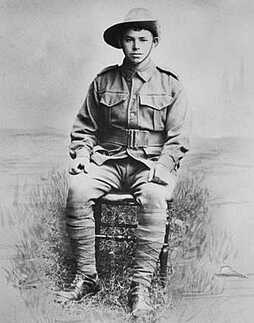
4573 Private
Oliver Tresize
19th Bn. Australian Infantry, A. I. F.
5th November 1917, aged 22.
Plot XXI. EE. 10A.
Son of Thomas Henry and Agnes Tresize, of 63, Canterbury Rd., Whitstable, Kent, England. Native of Epsom, Surrey, England.
From Sydney, NSW (originally a merchant seaman of Epsom, Surrey, England). Pte Tresize enlisted on 11 December 1915 and embarked aboard HMAT Nestor on 9 April 1916 with the 11th Reinforcements. He died of wounds sustained during the Battle of Passchendaele, Belgium, on 5 November 1917, aged 22.
Oliver Tresize
19th Bn. Australian Infantry, A. I. F.
5th November 1917, aged 22.
Plot XXI. EE. 10A.
Son of Thomas Henry and Agnes Tresize, of 63, Canterbury Rd., Whitstable, Kent, England. Native of Epsom, Surrey, England.
From Sydney, NSW (originally a merchant seaman of Epsom, Surrey, England). Pte Tresize enlisted on 11 December 1915 and embarked aboard HMAT Nestor on 9 April 1916 with the 11th Reinforcements. He died of wounds sustained during the Battle of Passchendaele, Belgium, on 5 November 1917, aged 22.

5548 Private
Samuel Trim
68th Coy. Machine Gun Corps. (Infantry)
24th December 1916, aged 33.
Plot X. C. 40A.
Husband of Ethel Trim, of Upton Noble, Bruton, Somerset.
On 22 December the Company was relieved and began to move out of the trenches for rest at Erie Camp, west of Ypres. As it moved through the ruins of Zillebeke around 6pm. Heavy shellfire fell and it is assumed this is where Samuel was wounded. He was evacuated to the CCS at Remy Farm in the hamlet of Lijssenthoek. There Samuel succumbed to his wounds on 24 December 1916.
Picture courtesy of Great grandson, Shane Russell
Samuel Trim
68th Coy. Machine Gun Corps. (Infantry)
24th December 1916, aged 33.
Plot X. C. 40A.
Husband of Ethel Trim, of Upton Noble, Bruton, Somerset.
On 22 December the Company was relieved and began to move out of the trenches for rest at Erie Camp, west of Ypres. As it moved through the ruins of Zillebeke around 6pm. Heavy shellfire fell and it is assumed this is where Samuel was wounded. He was evacuated to the CCS at Remy Farm in the hamlet of Lijssenthoek. There Samuel succumbed to his wounds on 24 December 1916.
Picture courtesy of Great grandson, Shane Russell
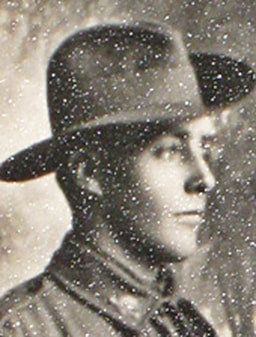
2749 Private
James Roland Tucker
50th Bn. Australian Infantry, A. I. F.
16th October 1917, aged 28.
Plot XXI. E. 6.
Son of James Douglas Percy and Margaret Tucker, of 146, Grant Avenue, Toorak, Adelaide, South Australia. Native of Adelaide.
Private JAMES ROLAND TUCKER, second son of Mr. and Mrs. J. D. P. Tucker, of Grant avenue, Toorak, died at the 17th Casualty Clear- ing Station from multiple gunshot wounds. He left his farm in 1915 to enlist, and after three unsuccessful applications he was accepted. He left Adelaide on October 23. 1916, shortly after recovering from a severe attack of meningitis, after training in England he went with the 50th Battalion to France, where he joined the machine gun section. He went -through the battle of Messines unhurt, but on August 26 received a gunshot wound in the leg. He made speedy recovery, and on September 9 was "quite well again and as fit as ever." A younger brother, Private W. C. Tucker, of the 32nd Battalion, was killed at Pozieres on July 20, 1918 Another brother. Lieutenant F. G. Tucker, of the 43rd Battalion, was severely wounded on August 1.
Note: His brother W. C. Tucker was not killed at Pozieres (officially listed as "missing" until 2010) but was identified (from DNA of relatives) in 2010 among the dead at Fromelles, France.
Picture courtesy of great nephew, Jim Tucker
James Roland Tucker
50th Bn. Australian Infantry, A. I. F.
16th October 1917, aged 28.
Plot XXI. E. 6.
Son of James Douglas Percy and Margaret Tucker, of 146, Grant Avenue, Toorak, Adelaide, South Australia. Native of Adelaide.
Private JAMES ROLAND TUCKER, second son of Mr. and Mrs. J. D. P. Tucker, of Grant avenue, Toorak, died at the 17th Casualty Clear- ing Station from multiple gunshot wounds. He left his farm in 1915 to enlist, and after three unsuccessful applications he was accepted. He left Adelaide on October 23. 1916, shortly after recovering from a severe attack of meningitis, after training in England he went with the 50th Battalion to France, where he joined the machine gun section. He went -through the battle of Messines unhurt, but on August 26 received a gunshot wound in the leg. He made speedy recovery, and on September 9 was "quite well again and as fit as ever." A younger brother, Private W. C. Tucker, of the 32nd Battalion, was killed at Pozieres on July 20, 1918 Another brother. Lieutenant F. G. Tucker, of the 43rd Battalion, was severely wounded on August 1.
Note: His brother W. C. Tucker was not killed at Pozieres (officially listed as "missing" until 2010) but was identified (from DNA of relatives) in 2010 among the dead at Fromelles, France.
Picture courtesy of great nephew, Jim Tucker
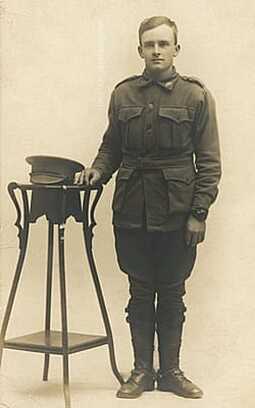
4384 Private
Stanley William Joseph Vance
29th Bn. Australian Infantry, A. I. F.
30th September 1917, aged 25.
Plot XX. C. 10.
Son of Margaret and the late Wesley Johnstone Vance, of Dumaresque St., Campbelltown, New South Wales. Native of Kangaroo Valley, New South Wales.
Pte Vance embarked from Sydney on 3 November 1916 aboard HMAT Afric A19 with the 11th Reinforcements. He died of wounds on 30 September 1917 at Poperinghe, aged 25.
Stanley William Joseph Vance
29th Bn. Australian Infantry, A. I. F.
30th September 1917, aged 25.
Plot XX. C. 10.
Son of Margaret and the late Wesley Johnstone Vance, of Dumaresque St., Campbelltown, New South Wales. Native of Kangaroo Valley, New South Wales.
Pte Vance embarked from Sydney on 3 November 1916 aboard HMAT Afric A19 with the 11th Reinforcements. He died of wounds on 30 September 1917 at Poperinghe, aged 25.

2171 Private
Ashleigh Robert Verdon
34th Bn. Australian Infantry, A. I. F.
1st October 1917, aged 27.
Plot XXV. A. 13.
Son of Elizabeth Ann Verdon, of 66, Maitland Rd., Mayfield, New South Wales Native of Breeza, New South Wales.
A tailor prior to enlisting in April 1916, Pte Verdon embarked from Sydney with the 3rd Reinforcements on board HMAT Anchises (A68) on 24 August 1916. After further training in England he arrived in France for service on the Western Front on 21 December 1916. On 1 October 1917, Pte Verdon, a stretcher bearer, was wounded in action by a shell at Zonnebeke, Belgium. He died in the early afternoon at the 17th Casualty Clearing Station. For the work he did that day, Pte Verdon was recommended, by his lieutenant, for the Military Medal but it was not awarded. He was 27 years of age.
Ashleigh Robert Verdon
34th Bn. Australian Infantry, A. I. F.
1st October 1917, aged 27.
Plot XXV. A. 13.
Son of Elizabeth Ann Verdon, of 66, Maitland Rd., Mayfield, New South Wales Native of Breeza, New South Wales.
A tailor prior to enlisting in April 1916, Pte Verdon embarked from Sydney with the 3rd Reinforcements on board HMAT Anchises (A68) on 24 August 1916. After further training in England he arrived in France for service on the Western Front on 21 December 1916. On 1 October 1917, Pte Verdon, a stretcher bearer, was wounded in action by a shell at Zonnebeke, Belgium. He died in the early afternoon at the 17th Casualty Clearing Station. For the work he did that day, Pte Verdon was recommended, by his lieutenant, for the Military Medal but it was not awarded. He was 27 years of age.
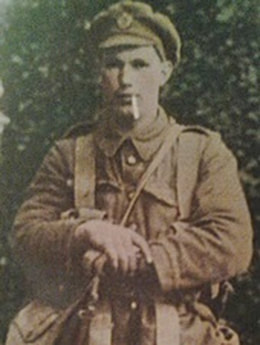
40094 Lance Corporal
William (Billy) Wainwright
61st Field Coy., Royal Engineers
28th October 1917, aged 22.
Plot XXI. BB. 6.
Son of Richard and Mary Ann Wainwright, of Yeaton, Baschurch, Salop.
This photograph was in my Grans house when l was a child. He was her brother. Rest in Peace Great Uncle Billy.
Picture courtesy Roy Davies. Shrewsbury.
William (Billy) Wainwright
61st Field Coy., Royal Engineers
28th October 1917, aged 22.
Plot XXI. BB. 6.
Son of Richard and Mary Ann Wainwright, of Yeaton, Baschurch, Salop.
This photograph was in my Grans house when l was a child. He was her brother. Rest in Peace Great Uncle Billy.
Picture courtesy Roy Davies. Shrewsbury.
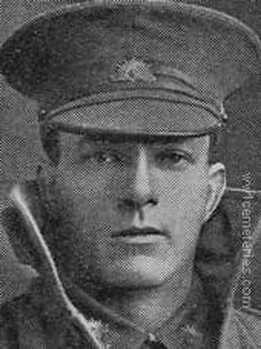
6384 Private
George Frederick Walsh
3rd Bn. Australian Infantry, A. I. F.
9th November 1917, aged 26.
Plot XXII. CC. 9.
Son of George Frederick and Mary Ellen Walsh, of Simpson St., Auburn, New South Wales.
of Granville, NSW. A labourer prior to enlisting, he embarked from Sydney aboard HMAT Euripides (A14) on 9 September 1916. He was wounded in action while manning a Lewis gun at Passchendaele, Belgium on 9 November 1917 and died later that day at the dressing station, aged 26.
George Frederick Walsh
3rd Bn. Australian Infantry, A. I. F.
9th November 1917, aged 26.
Plot XXII. CC. 9.
Son of George Frederick and Mary Ellen Walsh, of Simpson St., Auburn, New South Wales.
of Granville, NSW. A labourer prior to enlisting, he embarked from Sydney aboard HMAT Euripides (A14) on 9 September 1916. He was wounded in action while manning a Lewis gun at Passchendaele, Belgium on 9 November 1917 and died later that day at the dressing station, aged 26.
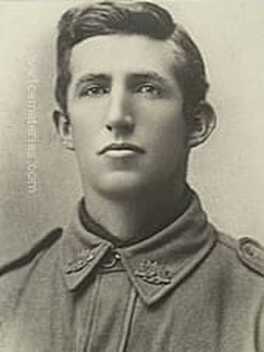
6399 Private
Robert Butler Walsh
21st Bn. Australian Infantry, A. I. F.
9th October 1917, aged 29.
Plot XXI. D. 13.
Son of John Joseph and Annie Elizabeth Walsh, of Welbar Rd., Drouin, Gippsland, Victoria, Australia.
A 28 year old farmer prior to enlisting on 25 October 1916, he embarked for overseas with 18th Reinforcements from Melbourne on 23 November 1916 aboard HMAT Hororata. Pte Walsh died of wounds at the 3rd (Canadian) C. C. S. at 2.30.p.m on 9 October 1917.
6420 Private R. J. Wyatt helped carry the fatally wounded Robert Walsh to the Dressing Station:
"I helped to carry him to the Dressing Station at Westhoek Rodge on the October 6th 1917, he was badly hit in the side by shrapnel and wanted me to shoot him, he was in such great pain. He was conscious when I left him at the Dressing Station."
Robert Butler Walsh
21st Bn. Australian Infantry, A. I. F.
9th October 1917, aged 29.
Plot XXI. D. 13.
Son of John Joseph and Annie Elizabeth Walsh, of Welbar Rd., Drouin, Gippsland, Victoria, Australia.
A 28 year old farmer prior to enlisting on 25 October 1916, he embarked for overseas with 18th Reinforcements from Melbourne on 23 November 1916 aboard HMAT Hororata. Pte Walsh died of wounds at the 3rd (Canadian) C. C. S. at 2.30.p.m on 9 October 1917.
6420 Private R. J. Wyatt helped carry the fatally wounded Robert Walsh to the Dressing Station:
"I helped to carry him to the Dressing Station at Westhoek Rodge on the October 6th 1917, he was badly hit in the side by shrapnel and wanted me to shoot him, he was in such great pain. He was conscious when I left him at the Dressing Station."
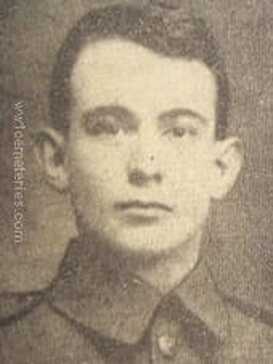
243809 Private
Albert Ward
1st/5th Bn. The Loyal North Lancashire Regiment
27th March 1917, aged 21.
Plot XI. C. 13A.
Son of Thomas and Emma Jane Ward, of 22, Shale St., Burnley, Lancs.
Albert Ward
1st/5th Bn. The Loyal North Lancashire Regiment
27th March 1917, aged 21.
Plot XI. C. 13A.
Son of Thomas and Emma Jane Ward, of 22, Shale St., Burnley, Lancs.
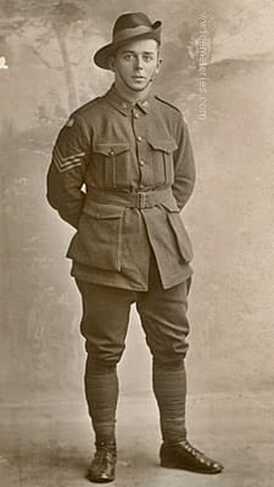
Second Lieutenant
Bruce Wynter Warden
56th Bn. Australian Infantry, A. I. F.
27th September 1917, aged 23.
Plot XXV. D. 18.
Son of Winter David and Margaret Wallace Warden, of "Airlie," Milton, New South Wales. Native of Milton, New South Wales.
A grazier prior to enlisting in August 1914, Private Warden embarked from Sydney on board HMAT Star of Victoria (A16) on 20 October 1914. He was promoted to the rank of Corporal on 11 August 1915 at Gallipoli, and to Sergeant while serving in Egypt in January 1916. He arrived in France for service on the Western Front in March 1917 and was transferred to the 56th Battalion. In July 1917 he was promoted to the rank of 2nd Lieutenant (2nd Lt). On 27 September 1917, 2nd Lt Warden died of wounds received in action at Polygon Wood, Ypres, Belgium. He was 23 years of age.
An eyewitness saw him hit in the abdomen by a piece of shell "to the left of the big mound in Polygon Wood." He believed he had been killed outright but this was incorrect. Another remembered seeing him wounded in a shell hole. 2nd Lt. Warden was taken to the Canadian C. C. S. at Poperinghe, where he later died.
Bruce Wynter Warden
56th Bn. Australian Infantry, A. I. F.
27th September 1917, aged 23.
Plot XXV. D. 18.
Son of Winter David and Margaret Wallace Warden, of "Airlie," Milton, New South Wales. Native of Milton, New South Wales.
A grazier prior to enlisting in August 1914, Private Warden embarked from Sydney on board HMAT Star of Victoria (A16) on 20 October 1914. He was promoted to the rank of Corporal on 11 August 1915 at Gallipoli, and to Sergeant while serving in Egypt in January 1916. He arrived in France for service on the Western Front in March 1917 and was transferred to the 56th Battalion. In July 1917 he was promoted to the rank of 2nd Lieutenant (2nd Lt). On 27 September 1917, 2nd Lt Warden died of wounds received in action at Polygon Wood, Ypres, Belgium. He was 23 years of age.
An eyewitness saw him hit in the abdomen by a piece of shell "to the left of the big mound in Polygon Wood." He believed he had been killed outright but this was incorrect. Another remembered seeing him wounded in a shell hole. 2nd Lt. Warden was taken to the Canadian C. C. S. at Poperinghe, where he later died.
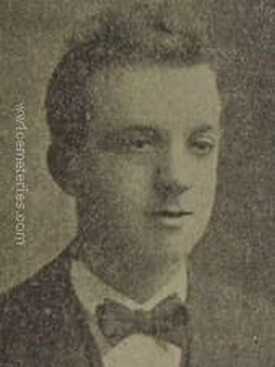
203306 Private
Harry Waterworth
2nd/5th Bn. Royal Warwickshire Regiment
9th September 1917, aged 20.
Plot XVIII. E. 4A.
Son of John R. and Emily Waterworth, of 10, Walshaw Lane, Burnley. Born Burnley.
Harry Waterworth
2nd/5th Bn. Royal Warwickshire Regiment
9th September 1917, aged 20.
Plot XVIII. E. 4A.
Son of John R. and Emily Waterworth, of 10, Walshaw Lane, Burnley. Born Burnley.
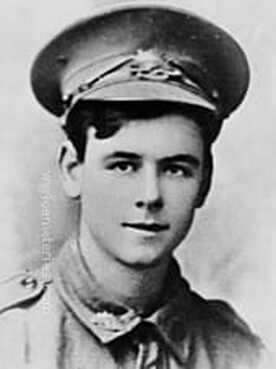
5914 Lance Corporal
Herbert Austin West
20th Bn. Australian Infantry, A. I. F.
8th October 1917, aged 16.
Plot XX. I. 19A.
Son of Edwin and Margaret West, of Darleyoak, Rylstone, New South Wales. Native of Sydney, New South Wales.
From Leichhardt, NSW. Believed to have been born 2nd September 1901, LCpl West enlisted on 13 May 1916 at the age of fourteen years and eight months. He claimed to be eighteen years and one month and his application to enlist claims a document recording his parents' consent was produced. He embarked on the HMAT Ceramic on 7 October 1916 and fought for eight months in the trenches where he won his promotion to Lance Corporal, aged sixteen. He was wounded on 3 May 1917 and returned to the trenches a week later. On 8 October 1917 he died of wounds in Belgium at the 2nd Canadian Casualty Clearing Station, one month after his sixteenth birthday.
Herbert Austin West
20th Bn. Australian Infantry, A. I. F.
8th October 1917, aged 16.
Plot XX. I. 19A.
Son of Edwin and Margaret West, of Darleyoak, Rylstone, New South Wales. Native of Sydney, New South Wales.
From Leichhardt, NSW. Believed to have been born 2nd September 1901, LCpl West enlisted on 13 May 1916 at the age of fourteen years and eight months. He claimed to be eighteen years and one month and his application to enlist claims a document recording his parents' consent was produced. He embarked on the HMAT Ceramic on 7 October 1916 and fought for eight months in the trenches where he won his promotion to Lance Corporal, aged sixteen. He was wounded on 3 May 1917 and returned to the trenches a week later. On 8 October 1917 he died of wounds in Belgium at the 2nd Canadian Casualty Clearing Station, one month after his sixteenth birthday.
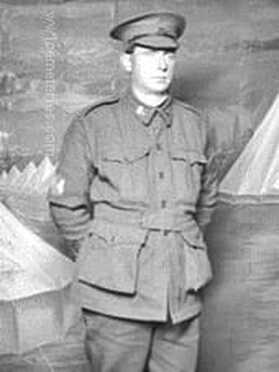
5700 Private
William David West
22nd Bn. Australian Infantry, A. I. F.
8th October 1917
Plot XXI. B. 8A.
A labourer from Newmarket, Victoria prior to enlistment, Pte West trained as a signaller and embarked with the 15th Reinforcements from Melbourne on HMAT Shropshire on 25 September 1916. Later wounded in action with a gun shot wound to the buttock he was evacuated to England. Following his recovery he rejoined his unit and was wounded in action for the second time. On 8 October 1917 he succumbed to his wounds.
He was admitted to the 2nd (Canadian) C. C. S. at Poperinghe on 8th October with wounds to his hand, right arm, both legs and left chest. He died at 2.p.m. that same day.
William David West
22nd Bn. Australian Infantry, A. I. F.
8th October 1917
Plot XXI. B. 8A.
A labourer from Newmarket, Victoria prior to enlistment, Pte West trained as a signaller and embarked with the 15th Reinforcements from Melbourne on HMAT Shropshire on 25 September 1916. Later wounded in action with a gun shot wound to the buttock he was evacuated to England. Following his recovery he rejoined his unit and was wounded in action for the second time. On 8 October 1917 he succumbed to his wounds.
He was admitted to the 2nd (Canadian) C. C. S. at Poperinghe on 8th October with wounds to his hand, right arm, both legs and left chest. He died at 2.p.m. that same day.
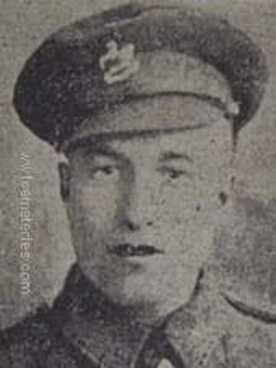
62932 Private
Arthur Whitaker
18th Bn. Lancashire Fusiliers
3rd October 1918, aged 18.
Plot XXIV. H. 21.
Son of Mr. and Mrs. Walter Whitaker, of 60 Hulme Street, Burnley, Lancs. His father also served.
Arthur Whitaker
18th Bn. Lancashire Fusiliers
3rd October 1918, aged 18.
Plot XXIV. H. 21.
Son of Mr. and Mrs. Walter Whitaker, of 60 Hulme Street, Burnley, Lancs. His father also served.
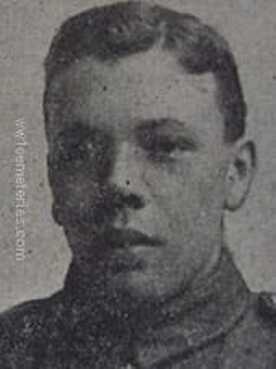
37735 Private
Hitchon Gladson E. Whitehead
2nd Bn. East Lancashire Regiment
7th January 1918, aged 18.
Plot XXVI. DD. 10.
Son of Hitchon and Emma Whitehead, of 49, Francis St., Burnley.
Hitchon Gladson E. Whitehead
2nd Bn. East Lancashire Regiment
7th January 1918, aged 18.
Plot XXVI. DD. 10.
Son of Hitchon and Emma Whitehead, of 49, Francis St., Burnley.
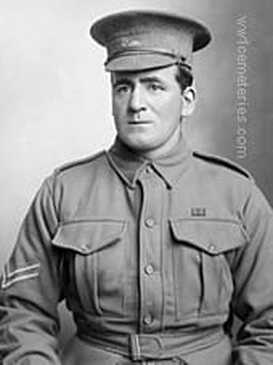
3520 Sergeant
Joseph Allan Whittle
50th Bn. Australian Infantry, A. I. F.
24th October 1917
Plot XXII. A. 13.
From Adelaide, SA (native of England). Cpl Whittle enlisted on 12 July 1915 and embarked from Adelaide aboard HMAT Benalla on 27 October 1915. He died of disease on 24 October 1917 in Belgium, whilst serving as Sergeant with the 50th Battalion.
Joseph Allan Whittle
50th Bn. Australian Infantry, A. I. F.
24th October 1917
Plot XXII. A. 13.
From Adelaide, SA (native of England). Cpl Whittle enlisted on 12 July 1915 and embarked from Adelaide aboard HMAT Benalla on 27 October 1915. He died of disease on 24 October 1917 in Belgium, whilst serving as Sergeant with the 50th Battalion.
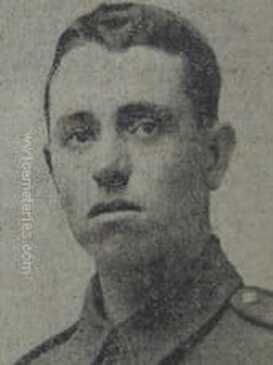
240228 Serjeant
John Wilkinson, D. C. M.
1st/5th Bn. East Lancashire Regiment
17th September 1917, aged 23.
Plot XIX. D. 12.
Son of David and Mary Ellen Wilkinson, of 117, Healey Wood Rd., Burnley.
Posthumously awarded the D. C. M. for rescuing under machine-gun and shell fire a dozen men in April 1917, initially he was expected to receive the Victoria Cross but this was not to be. He was killed when he was hit in the chest by a bullet from an enemy aeroplane.
John Wilkinson, D. C. M.
1st/5th Bn. East Lancashire Regiment
17th September 1917, aged 23.
Plot XIX. D. 12.
Son of David and Mary Ellen Wilkinson, of 117, Healey Wood Rd., Burnley.
Posthumously awarded the D. C. M. for rescuing under machine-gun and shell fire a dozen men in April 1917, initially he was expected to receive the Victoria Cross but this was not to be. He was killed when he was hit in the chest by a bullet from an enemy aeroplane.
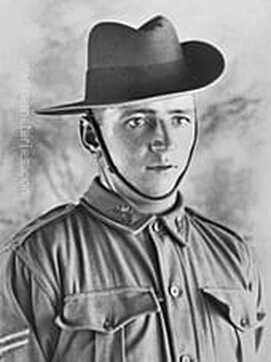
2036 Private
James Henry Williams
10th Bn. Australian Infantry, A. I. F.
10th September 1916, aged 22.
Plot IX. D. 19.
Son of William and Betsy Ann Williams, of 118, Ballarat Rd., Footscray, Victoria, Australia. Native of Bendigo, Victoria.
James Williams enlisted at Broken Hill, NSW, on 18 February 1915. He died of wounds on 10 September 1916, aged 22.
James Henry Williams
10th Bn. Australian Infantry, A. I. F.
10th September 1916, aged 22.
Plot IX. D. 19.
Son of William and Betsy Ann Williams, of 118, Ballarat Rd., Footscray, Victoria, Australia. Native of Bendigo, Victoria.
James Williams enlisted at Broken Hill, NSW, on 18 February 1915. He died of wounds on 10 September 1916, aged 22.
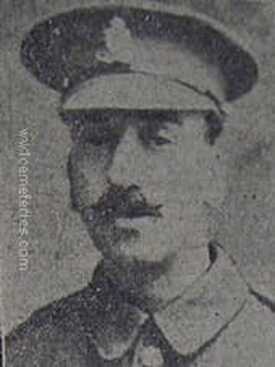
132323 Gunner
George Joseph Wilson
204th Siege Bty. Royal Garrison Artillery
23rd July 1917, aged 34.
Plot XVI. E. 3A.
Son of Hannah Wilson, of 30, South St., Park Rd., Dingle, Liverpool.
George Joseph Wilson
204th Siege Bty. Royal Garrison Artillery
23rd July 1917, aged 34.
Plot XVI. E. 3A.
Son of Hannah Wilson, of 30, South St., Park Rd., Dingle, Liverpool.
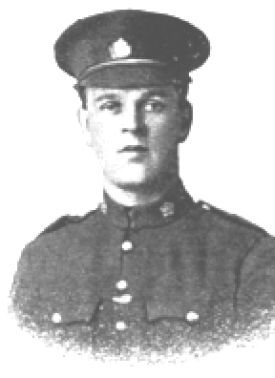
58104 Private
Robert Wilson
20th Bn. Canadian Infantry (Central Ontario Regiment)
5th April 1916. Aged 35.
Plot V. C. 39.
Son of Samuel Wilson and Eliza Kennedy Wilson, of Main St., Cullybackey, Co. Antrim, Ireland.
Picture Courtesy of Joe O'Raw and William Kilgour
Robert Wilson
20th Bn. Canadian Infantry (Central Ontario Regiment)
5th April 1916. Aged 35.
Plot V. C. 39.
Son of Samuel Wilson and Eliza Kennedy Wilson, of Main St., Cullybackey, Co. Antrim, Ireland.
Picture Courtesy of Joe O'Raw and William Kilgour

57864 Private
William Alexander Woodburn
18th Bn. Highland Light Infantry
17th October 1918, aged 19.
Plot XXX. F. 13.
Son of David and Annie Woodburn, of 146, West Graham St., Glasgow.
His headstone bears the inscription "Sleep On Dear Willie And Take Thy Rest We Miss You Most Who Loved You Best"
Pictures © Jacqueline Elouali Née Woodburn (Great Niece)
Jacqueline would very much like to hear from any other members of the Woodburn family. You can get in contact by clicking here and we will forward any emails to her.
William Alexander Woodburn
18th Bn. Highland Light Infantry
17th October 1918, aged 19.
Plot XXX. F. 13.
Son of David and Annie Woodburn, of 146, West Graham St., Glasgow.
His headstone bears the inscription "Sleep On Dear Willie And Take Thy Rest We Miss You Most Who Loved You Best"
Pictures © Jacqueline Elouali Née Woodburn (Great Niece)
Jacqueline would very much like to hear from any other members of the Woodburn family. You can get in contact by clicking here and we will forward any emails to her.
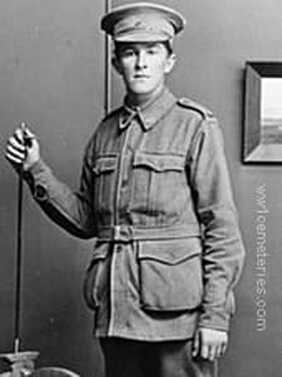
6655 Private
Leonard Ross Young
50th Bn. Australian Infantry, A. I. F.
26th September 1917, aged 19.
Plot XXIII. A. 6.
From Bews, South Australia. An 18 year old farmer prior to enlisting on 1 September 1916, he embarked for overseas with the 19th Reinforcements of the 27th Battalion from Adelaide on 24 January 1917 aboard HMAT Miltiades. While undergoing further training in England, he transferred to the 50th Battalion, joining the battalion in Belgium on 25 August 1917. After being wounded in action at Westhoek Ridge, Belgium on 26 September 1917, he died of wounds that same day.
Leonard Ross Young
50th Bn. Australian Infantry, A. I. F.
26th September 1917, aged 19.
Plot XXIII. A. 6.
From Bews, South Australia. An 18 year old farmer prior to enlisting on 1 September 1916, he embarked for overseas with the 19th Reinforcements of the 27th Battalion from Adelaide on 24 January 1917 aboard HMAT Miltiades. While undergoing further training in England, he transferred to the 50th Battalion, joining the battalion in Belgium on 25 August 1917. After being wounded in action at Westhoek Ridge, Belgium on 26 September 1917, he died of wounds that same day.

